August 20, 2023
Martha O'Kennon
Summer is racing along. (Actually, the whole year has seemed to just race by. We haven't had the hellacious heat of states a bit south of us, and today is typical. Last week we had more rain than I remember for a long time. The pond got refilled and yesterday the place that always leaks out first was busy leaking out! Let's see what silliness obtains in the rest of the week.
It seems that with each year, the date of first bloom of the Goldenrod is later and later. Well, it seems like that to me. So I made a tiny table of first time I see Goldenrod in bloom. Guess what. It is almost the same day - off by just a couple of days. This year it finally had some bright yellow flowers or buds on August 18. So I admit I lied - there really hasn't been much of a trend after all. It's just about to happen, though. Here it was out front on the 16th. Picture 2 shows it on the 18th. Picture 3 shows the state of gold on August 23 last year.
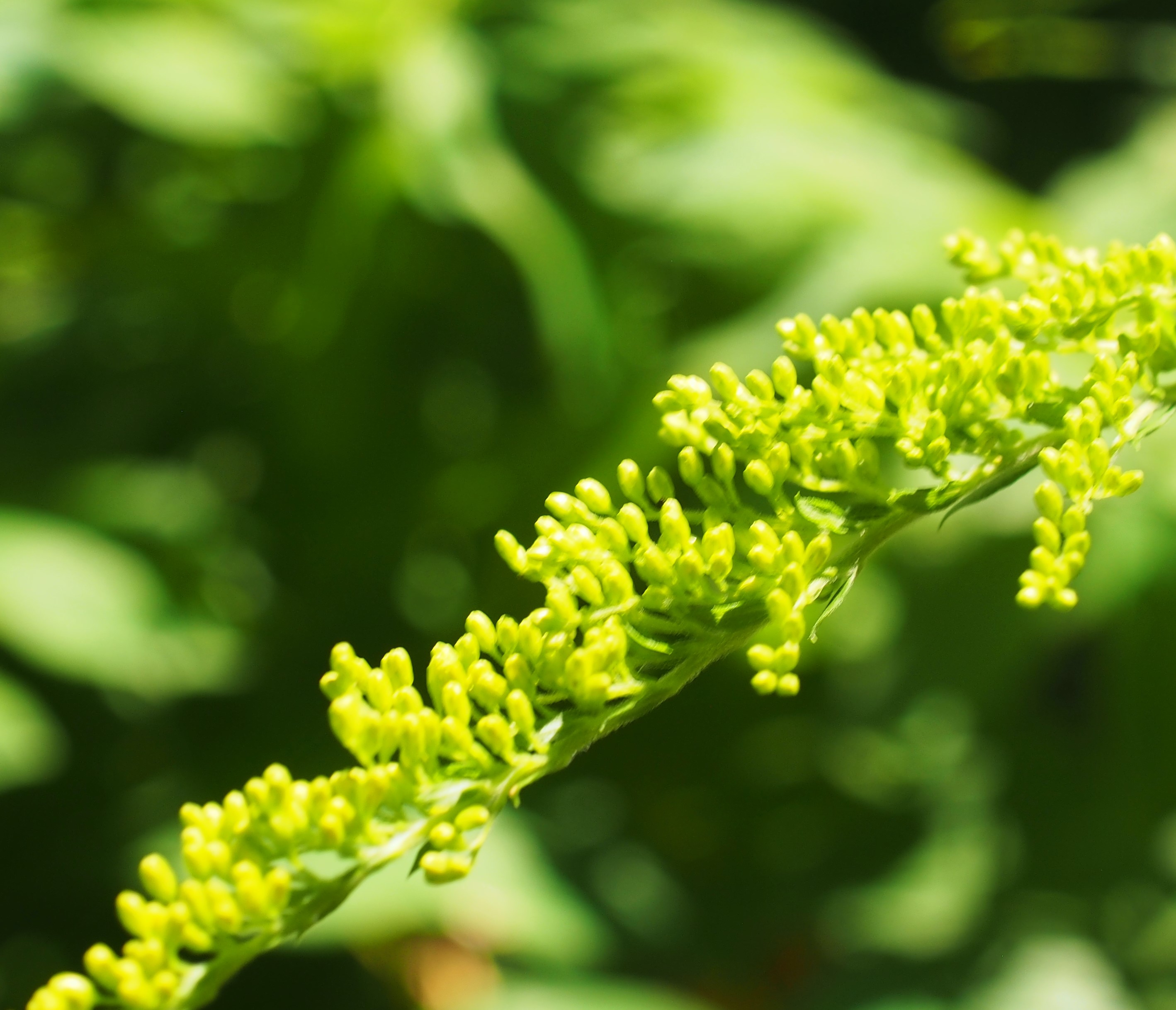
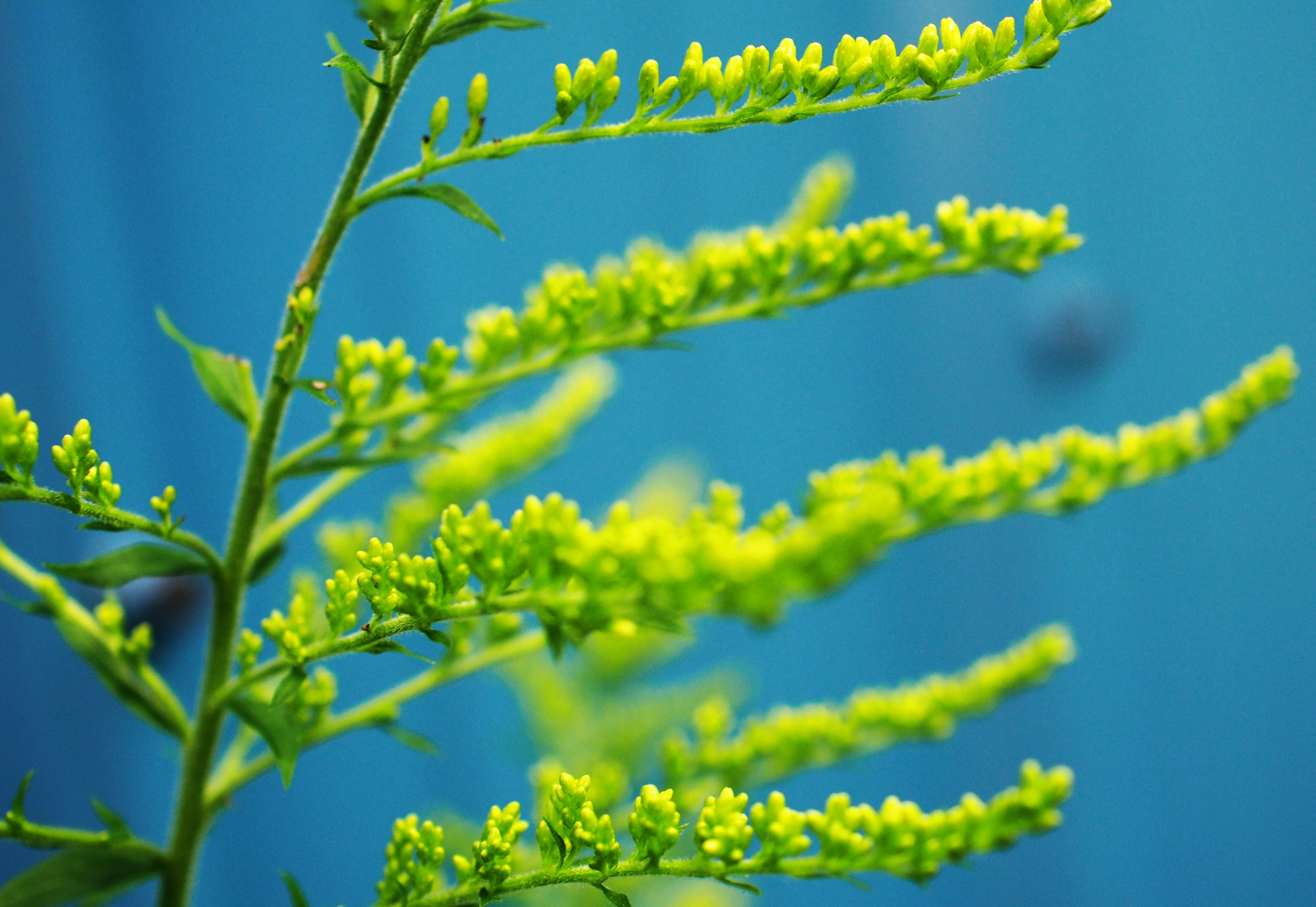
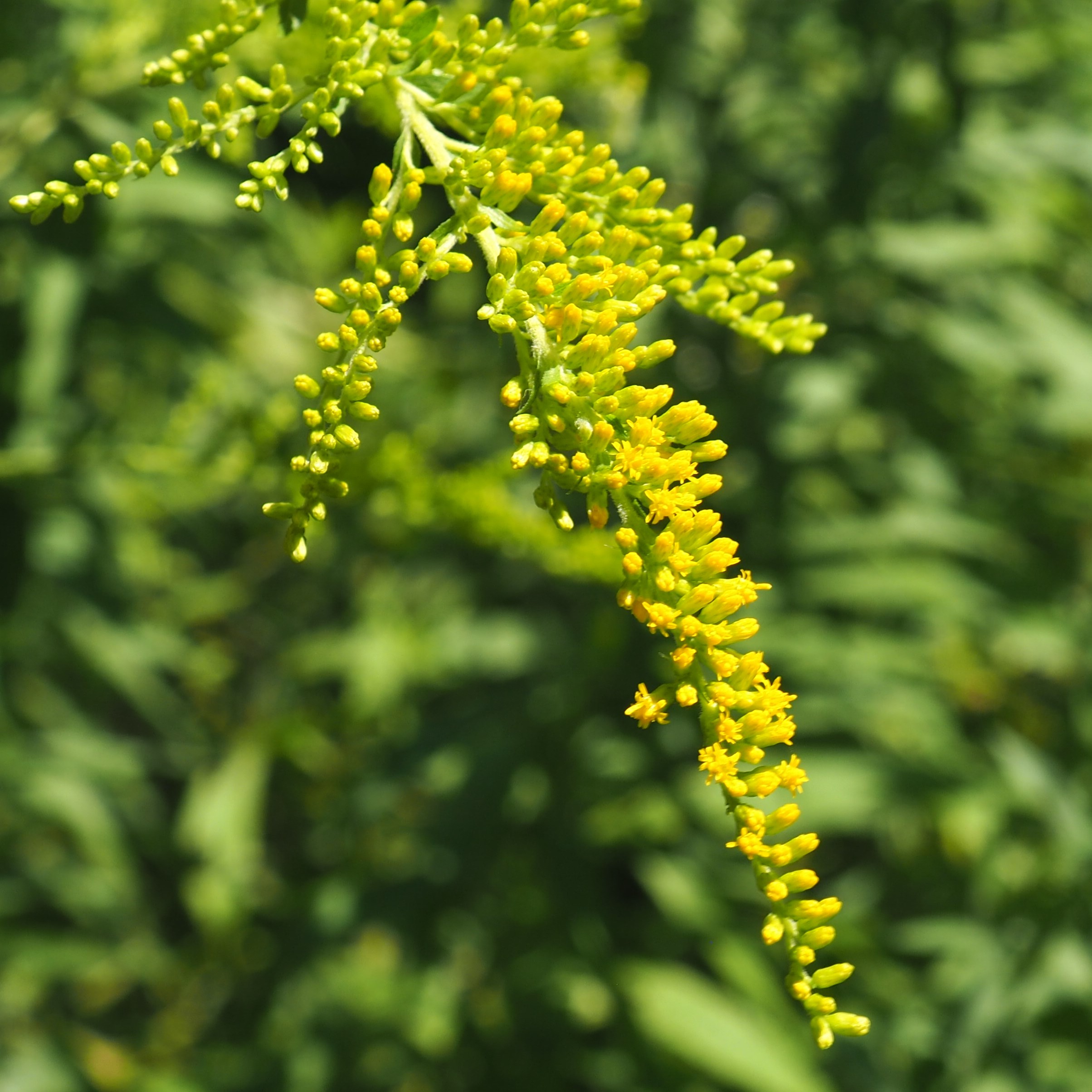
The lilies didn't bloom a whole lot this past week, although on August 18 they were beginning to open. We had several days of mostly rain, and one day the Pond actually overflowed because of all the extra water.
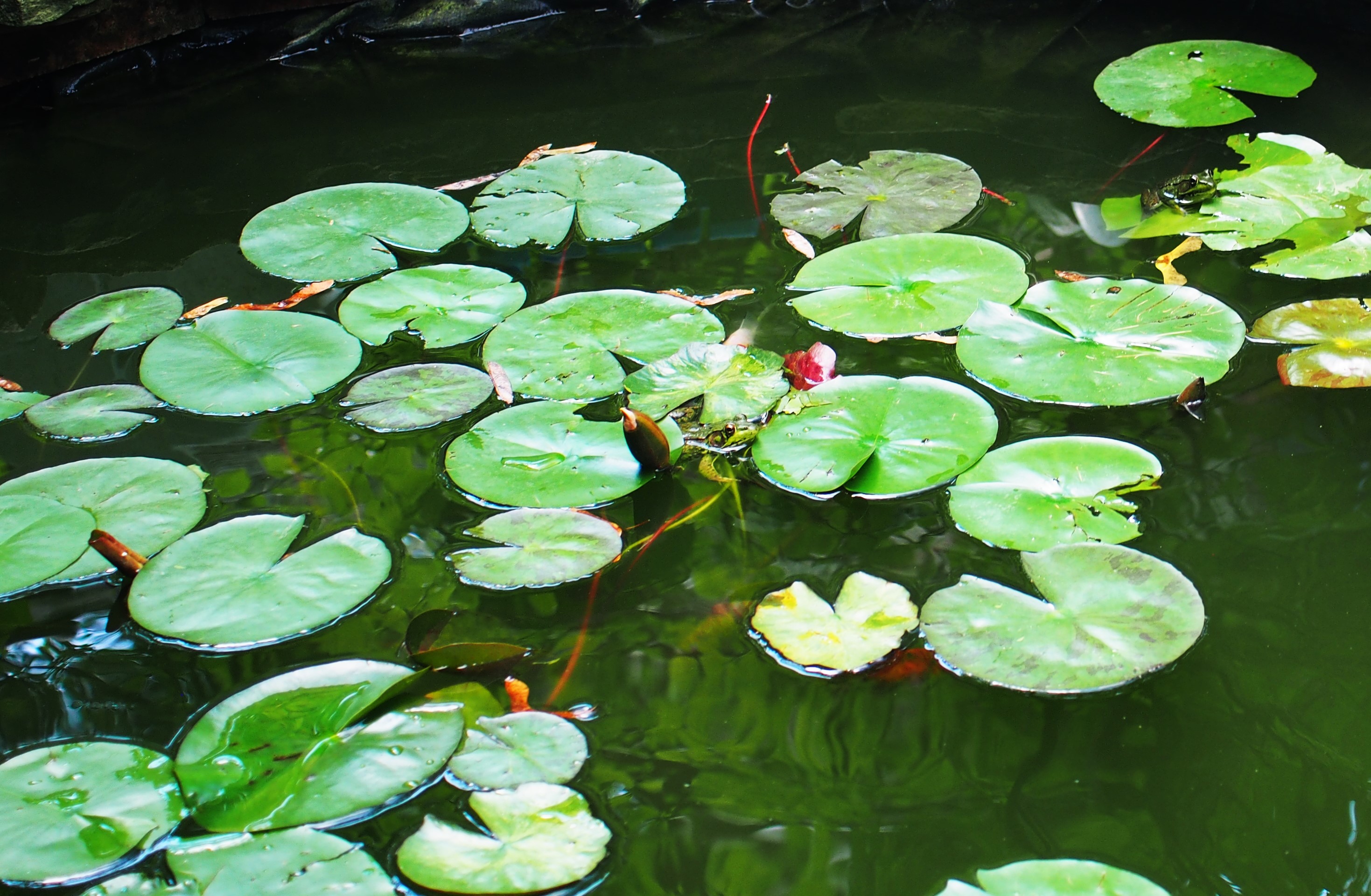

Remember that there is information in the name of the file for each image. You can see it by mousing over the image - look at the lower left of the screen. Or you can
click on the image to get to the (usually) larger image. Then the info is displayed in the address line above. Sometimes the second click will actually display a different view of the
original image.
The only Ants moving slowly enough for me to shoot them were the Nearctic Ants and a couple of others that I haven't had identified, one larger than most, and one much smaller.
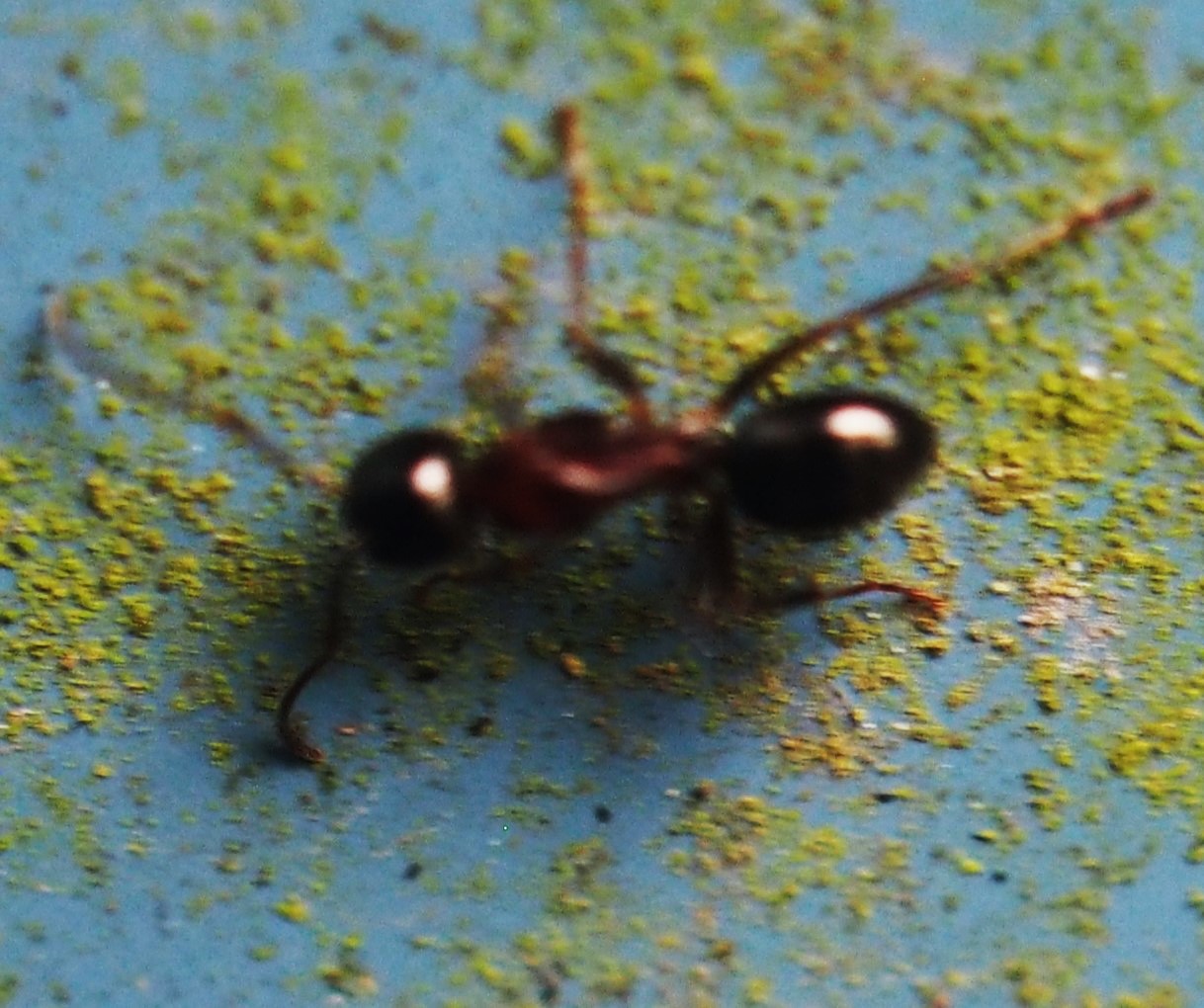
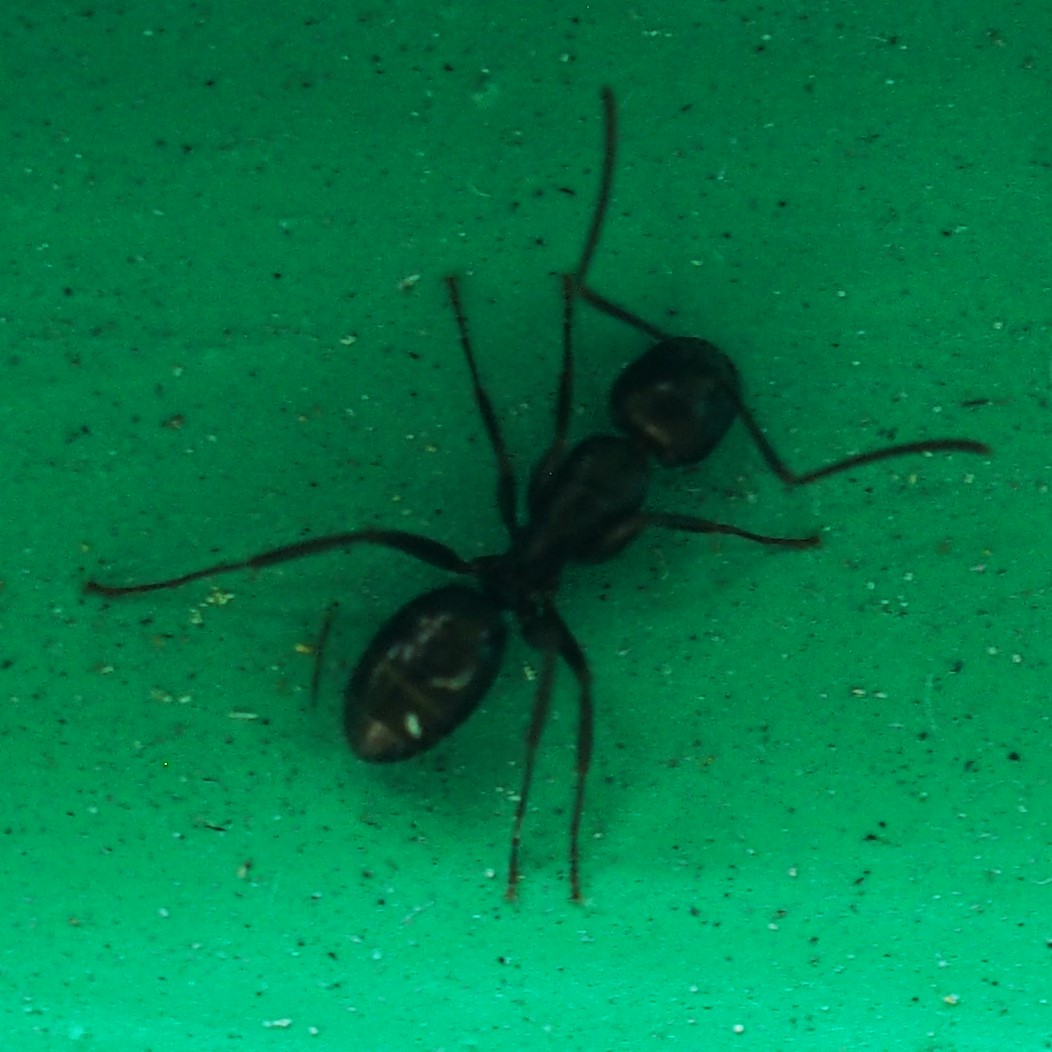
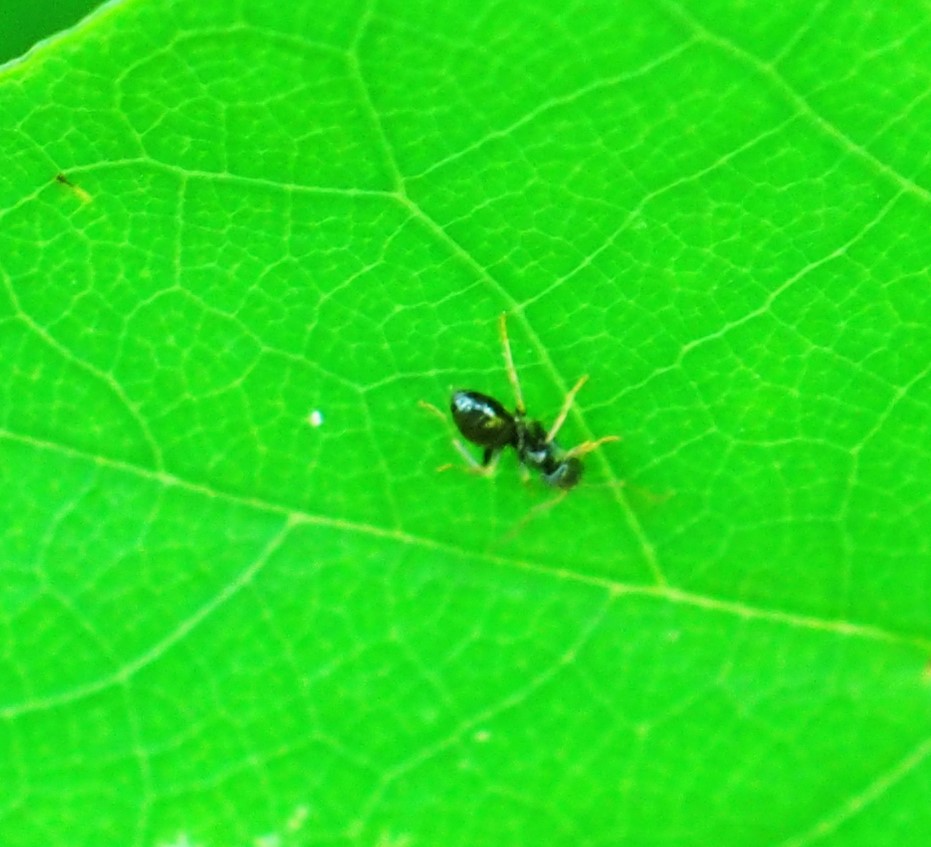
Just today I found a bright green Bee in a shocking pink flower (picture 2). How about Beetles (who were missing in action last week)? Well, there were more and they were more interesting. Picture 3 shows a Goldenrod Leaf Miner Beetle, I believe. It was on Goldenrod, and it had the characteristic vertical stripes (its name was Microrhopala vittata and vittata implies striped). The Redbud Seed Weevil (or Redbud Bruchid) was around a while on the North Wall. And another grey Weevil showed up for a little while.
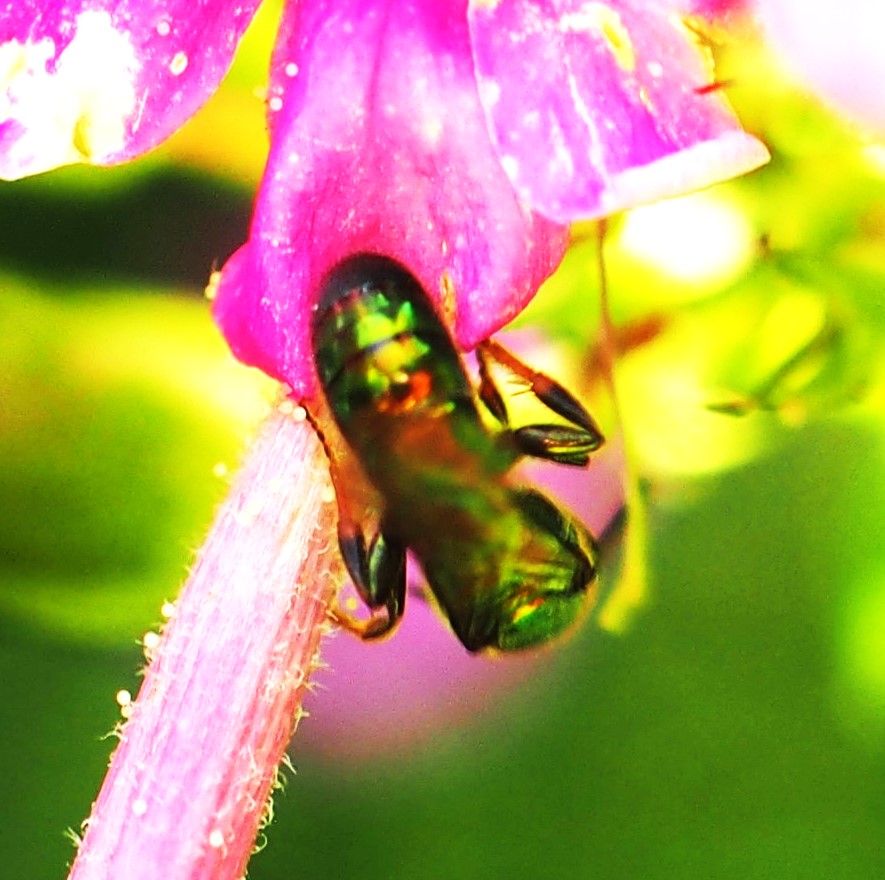

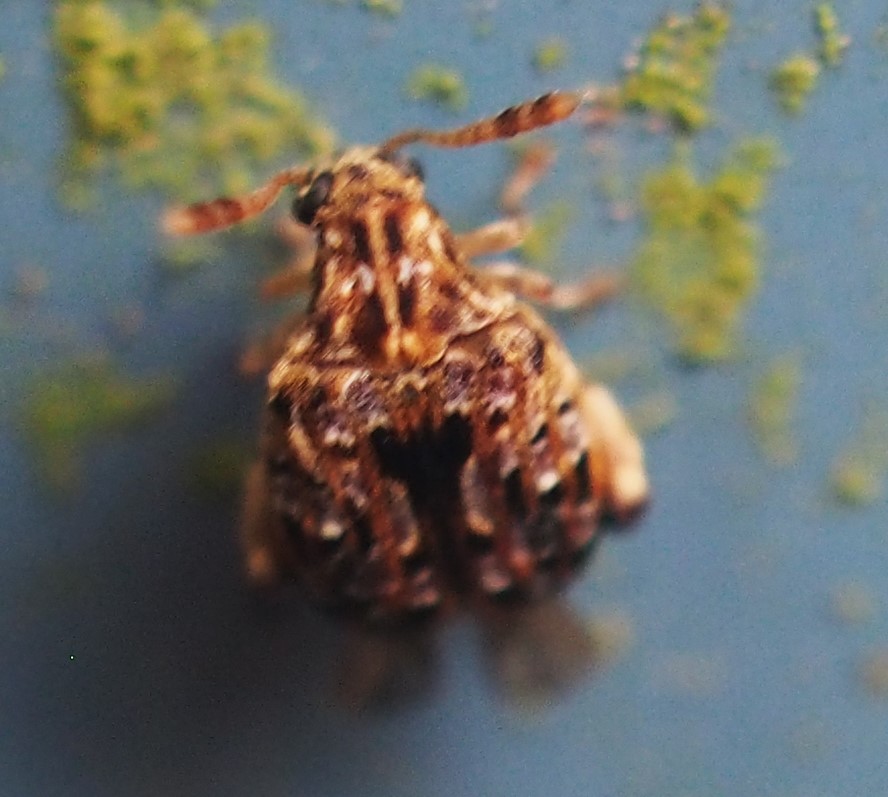
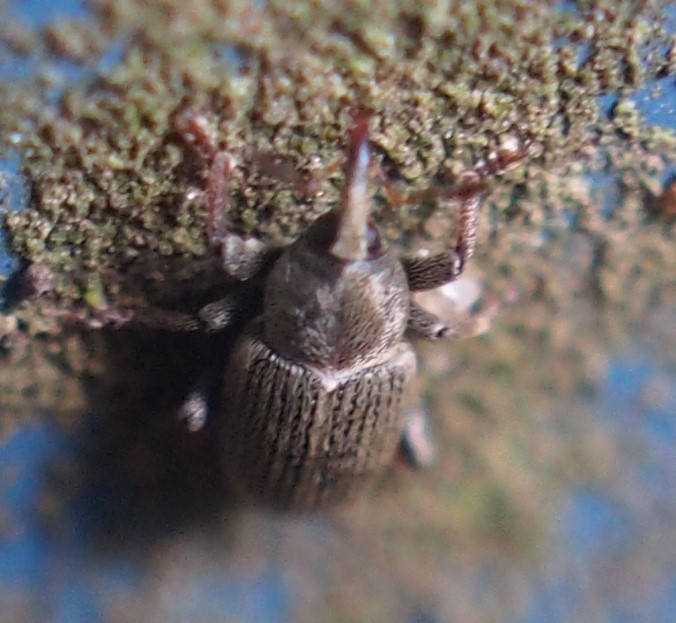
So on to the Bugs! That Empicoris errabundus is still here. I'm beginning to be able to see them better. Ignoring their gigantically long thread-legs, they're only about a half-inch long.

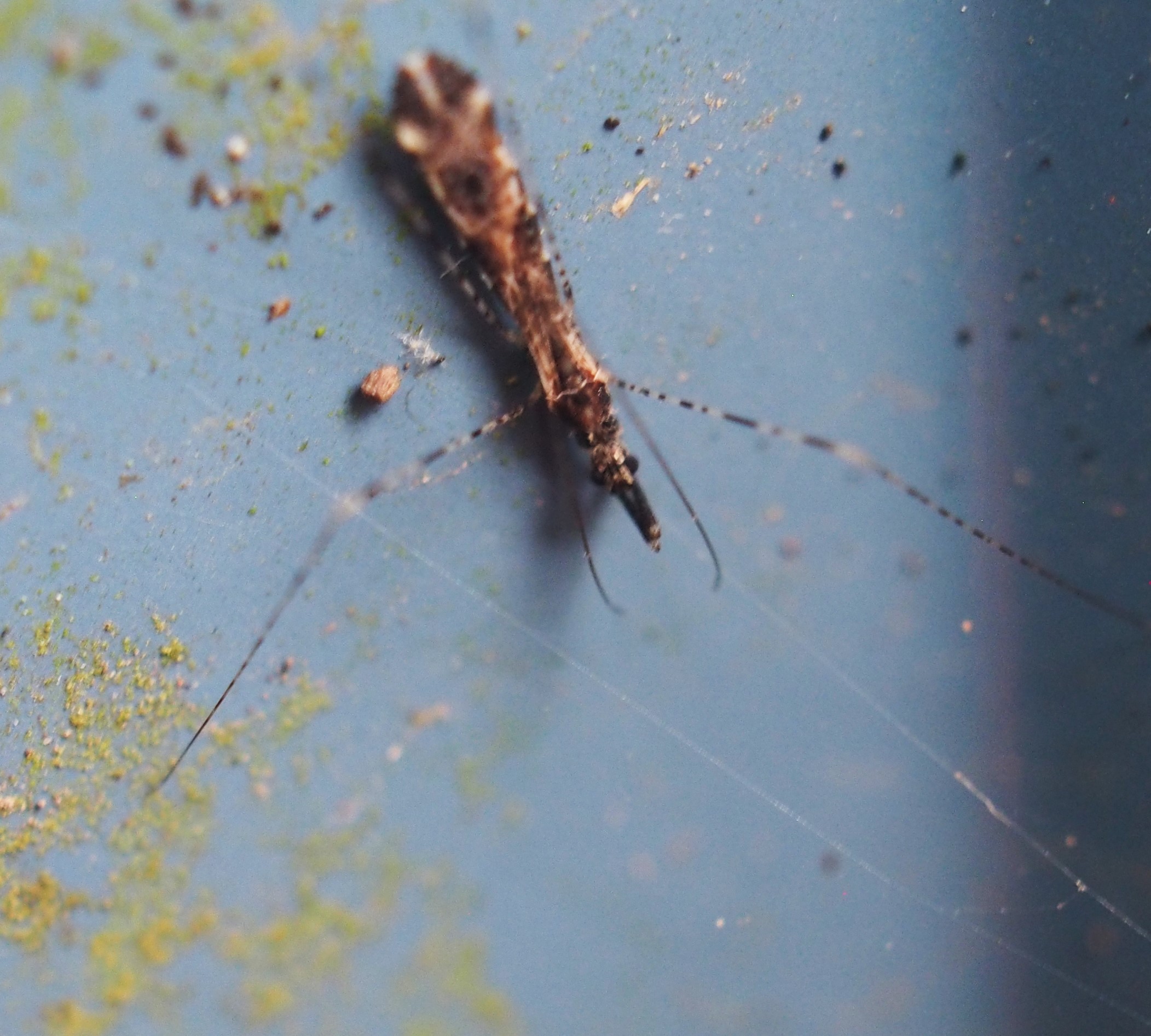
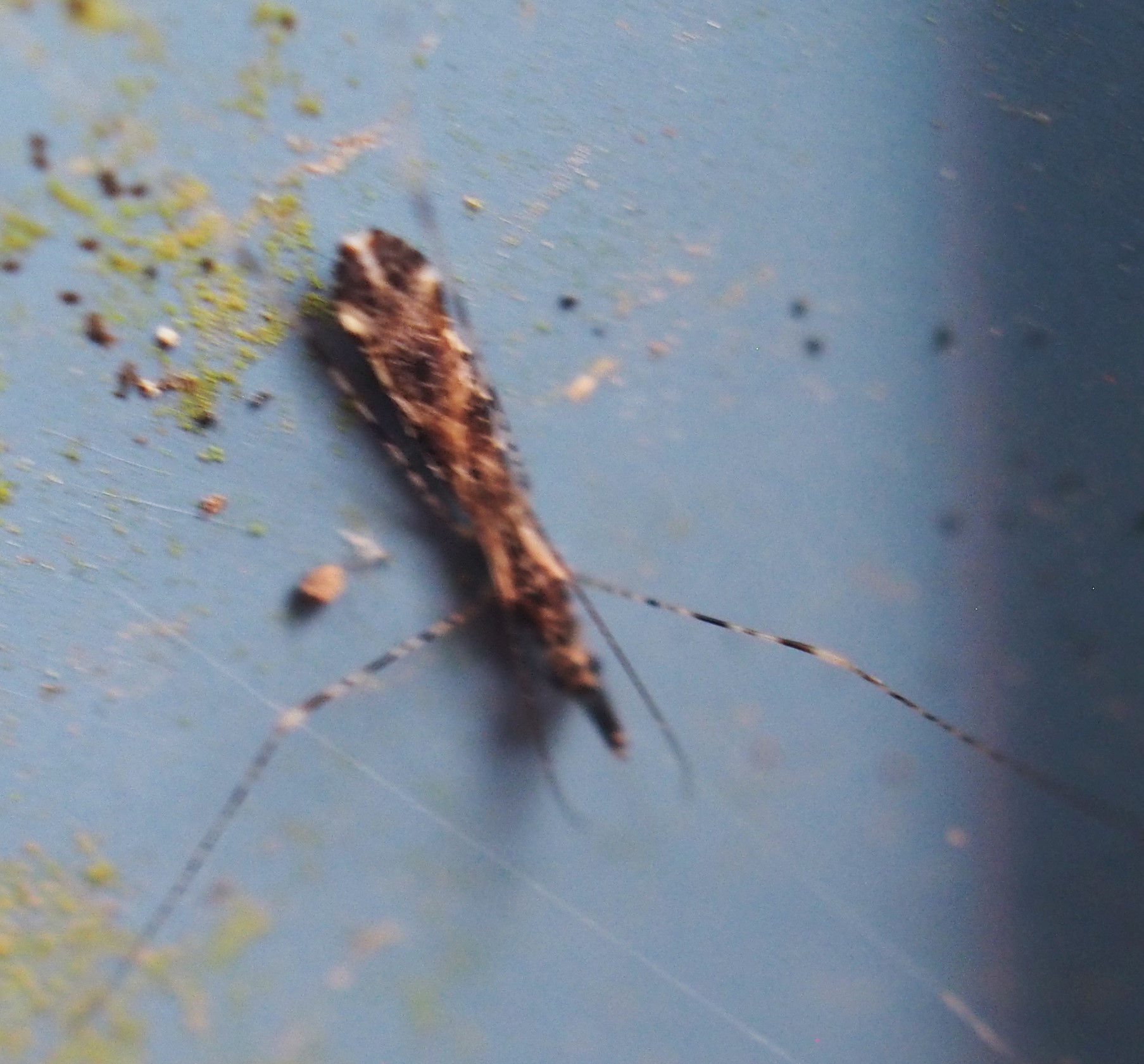
The little white ghost-like thing is probably a planthopper of some sort. I still have to look it up. Is number 2 a Leafhopper or a Barklouse? I'm not sure. If it's a Barklouse, it is probably Valenzuela flavidus. If it's a Leafhopper, I don't have a suggestion for which one it is. Third is a very unfocused picture of a Red-banded Leafhopper. And fourth seems to be a group of Aphrodes Leafhoppers.
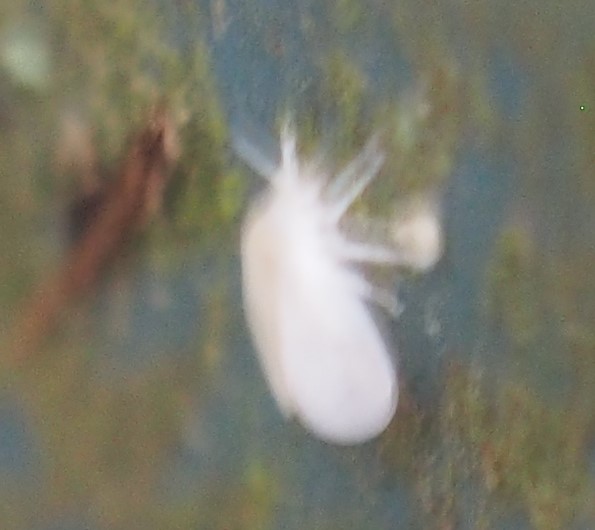
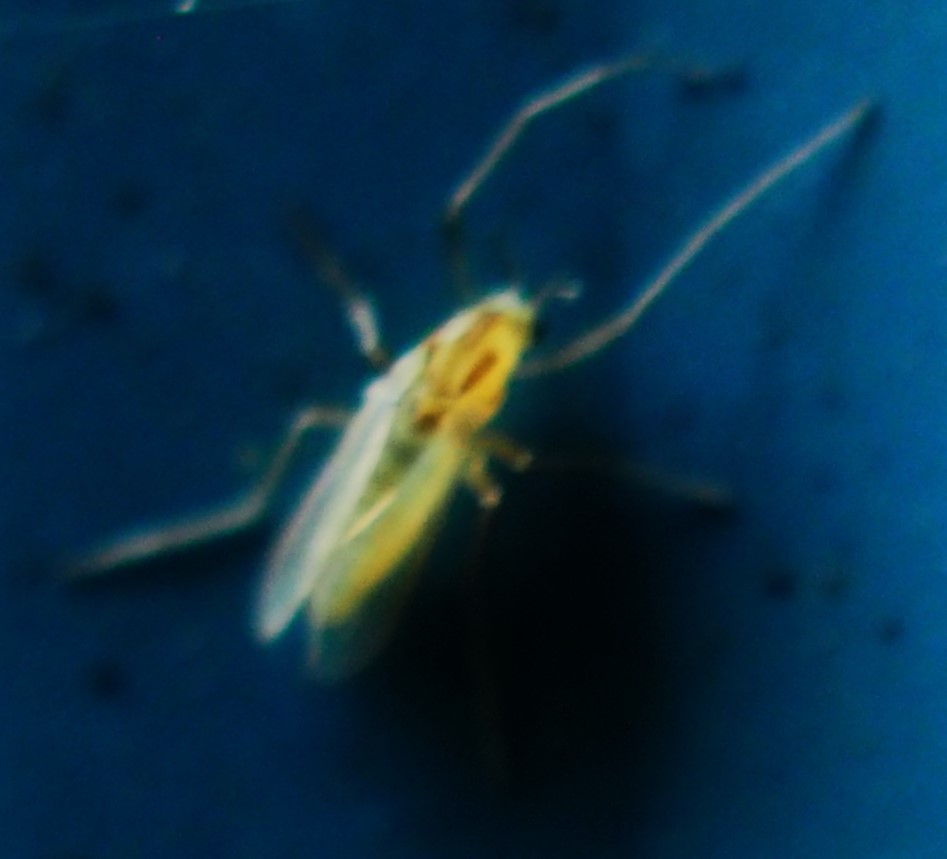
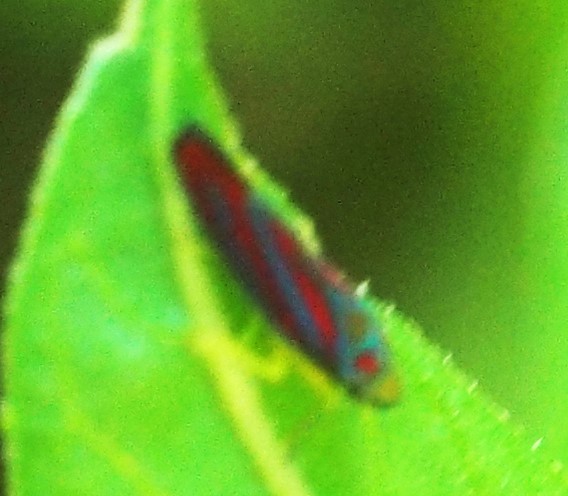
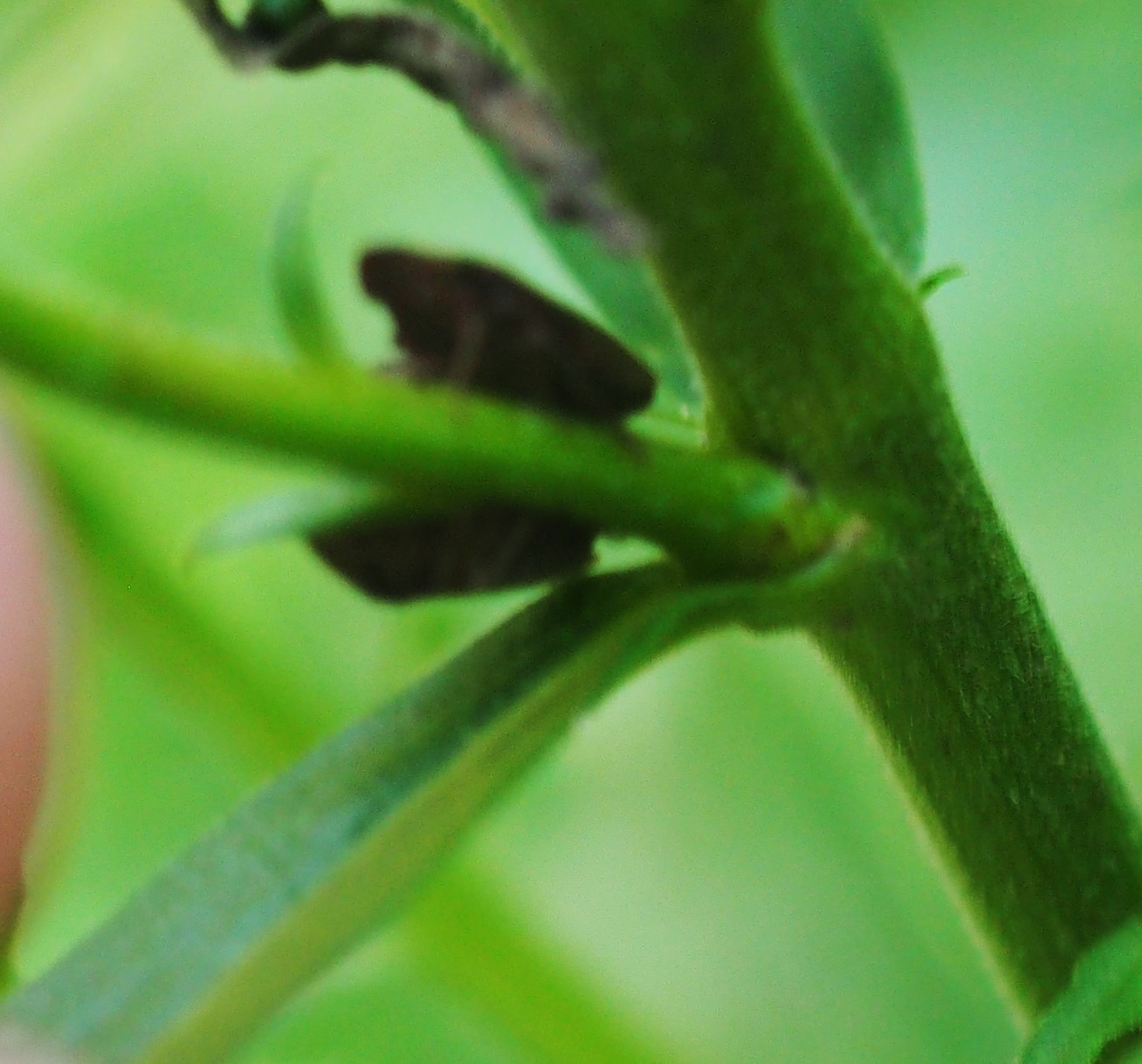
This first one is a Plant Bug named Paraproba capitata. Second is probably another Plant Bug. The third one looks a lot like a member of genus Phytocoris (also a Plant Bug).
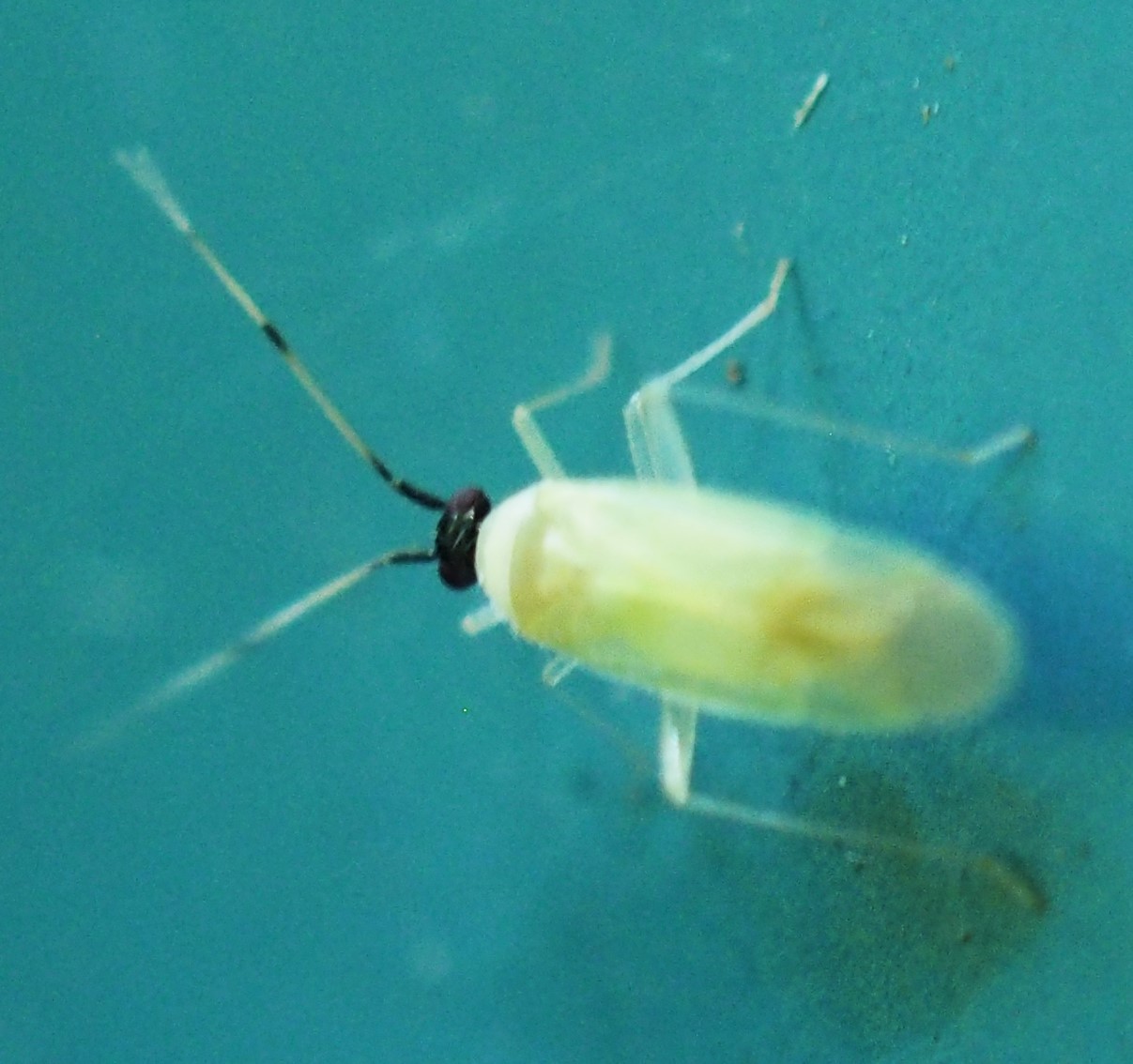
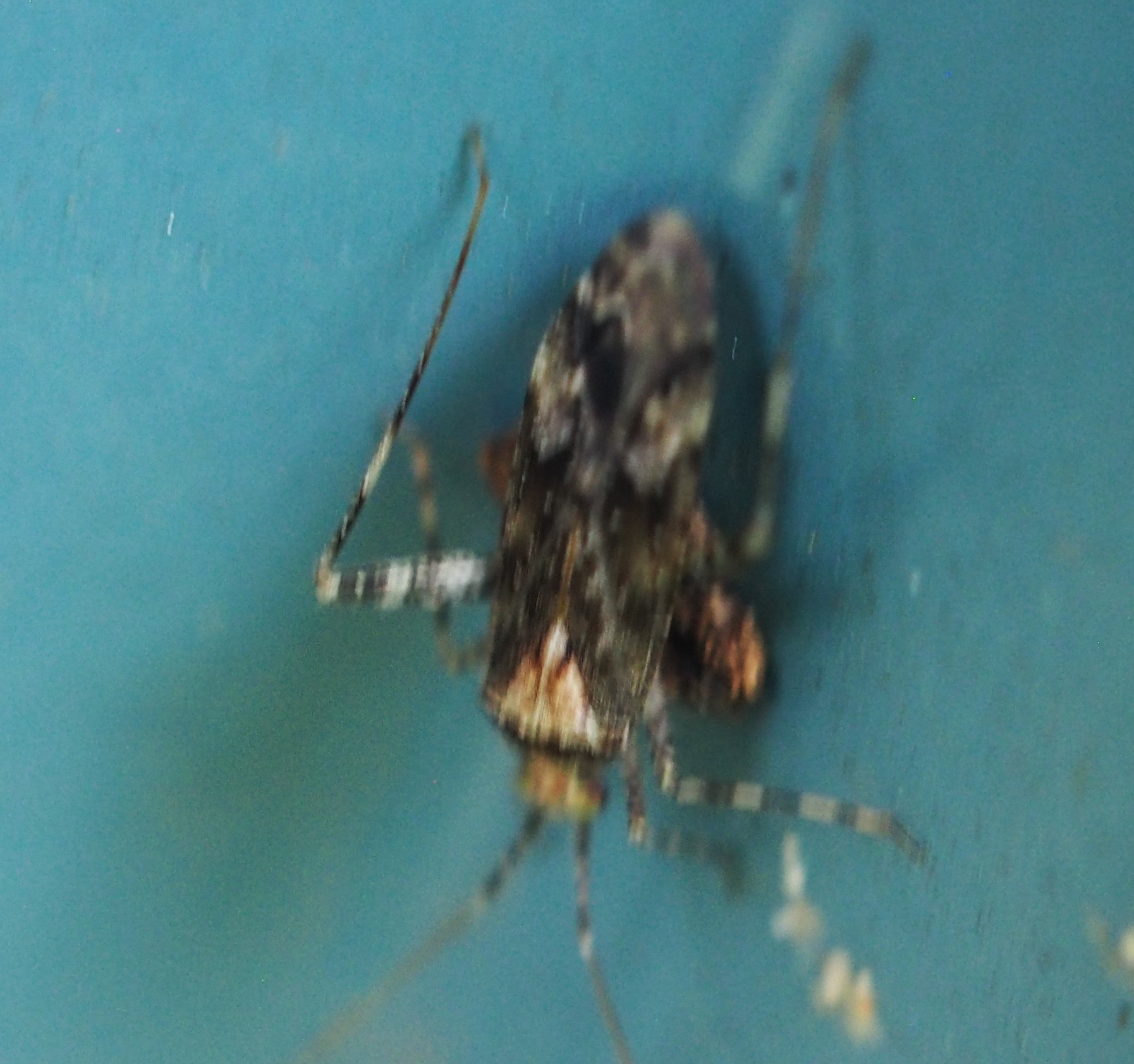

Another week, and those little Stinkbugs (probably genus Euschistus) are still around.
And another Bug, Metatropiphorus belfragii, is the predator of the week. These Bugs are a kind of Damsel Bug, and just as hungry.
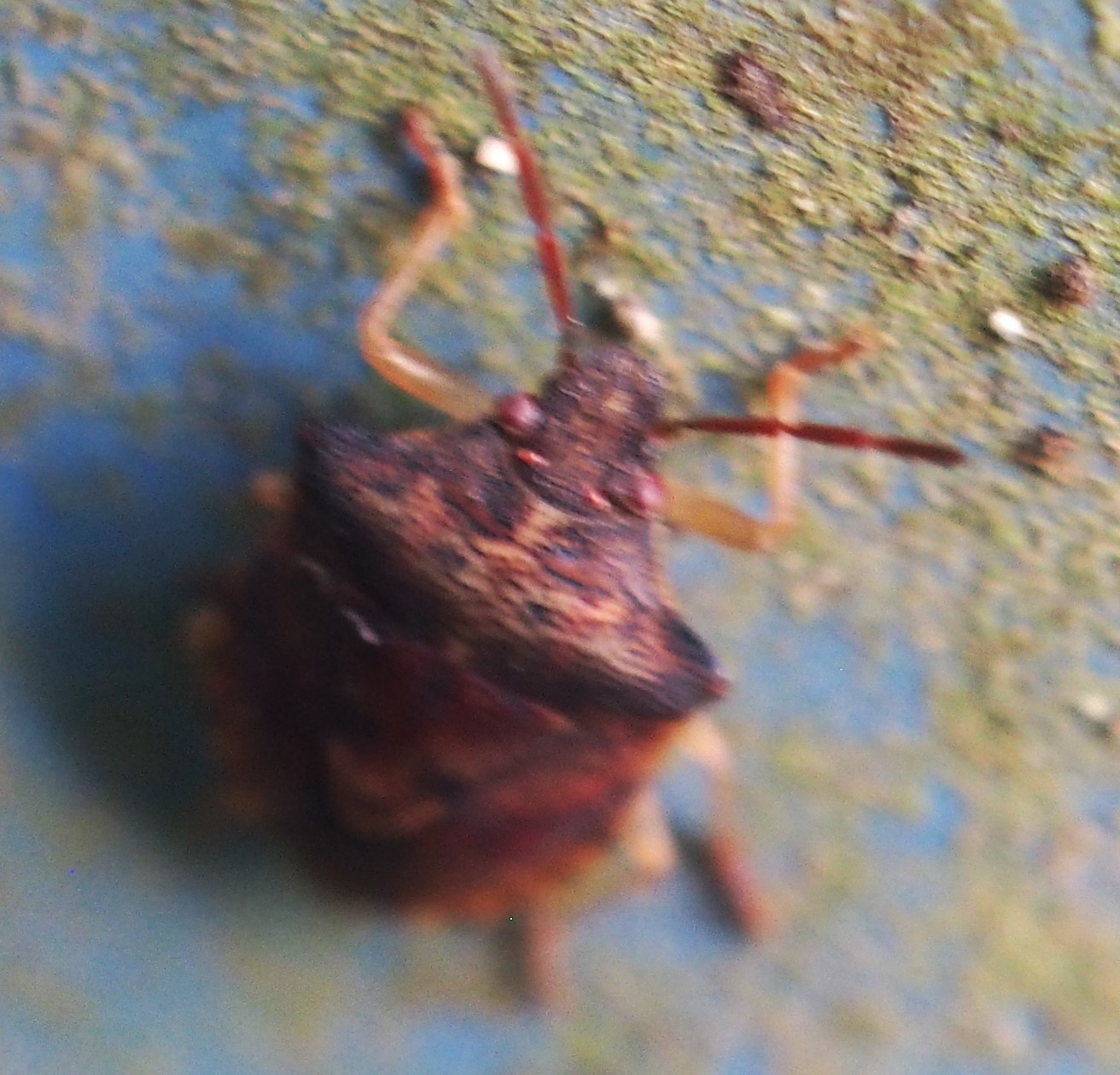

Let's see how the Barklice are doing this week. The Ectopsocus meridionalis are still the most populous - remember all those eggs they laid a few weeks ago? One thing that they have been doing new is to lay their recent egg packages almost completely round so that they look a bit like a Sun Disc.
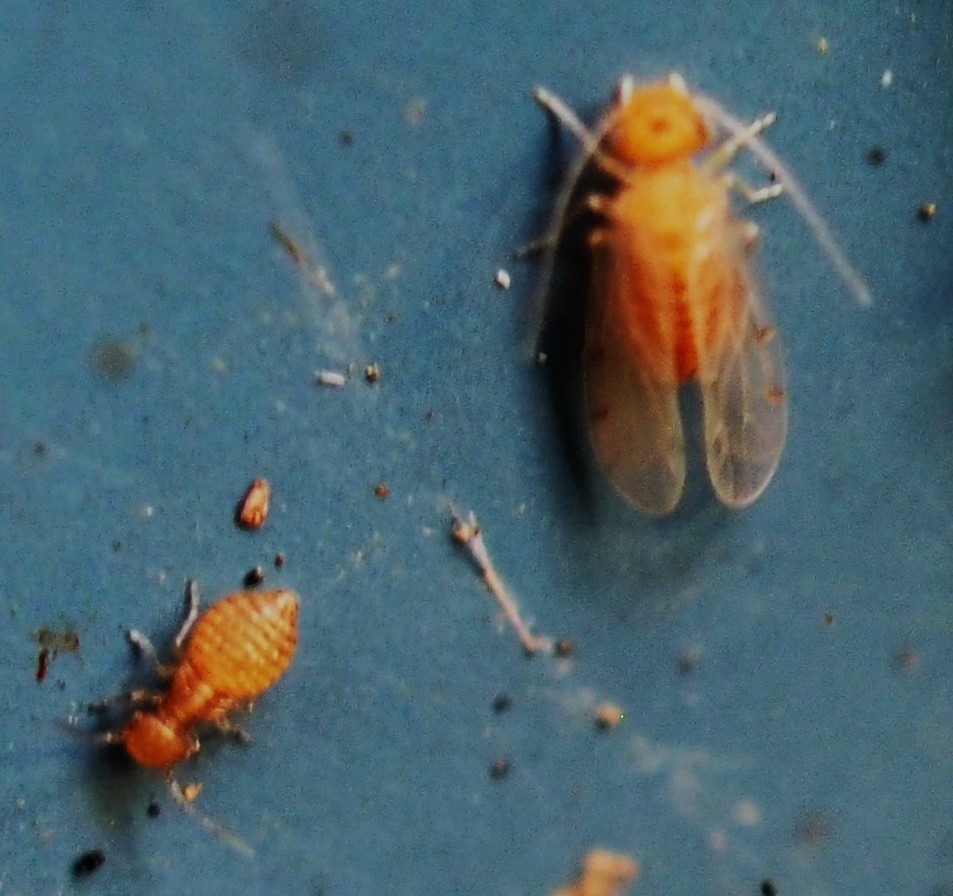

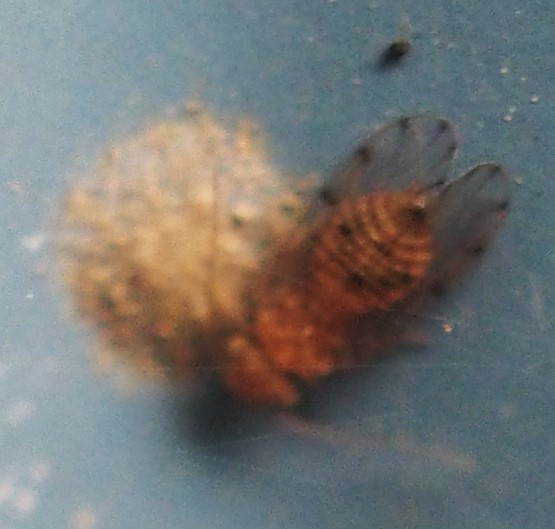
Let's take a look at the Graphopsocus cruciatus group, formerly our most numerous Barklice. Pictures 1 and 2 show adult and nymph respectively. Picture 3 shows a couple of clowns making fun of the guy in picture 2.

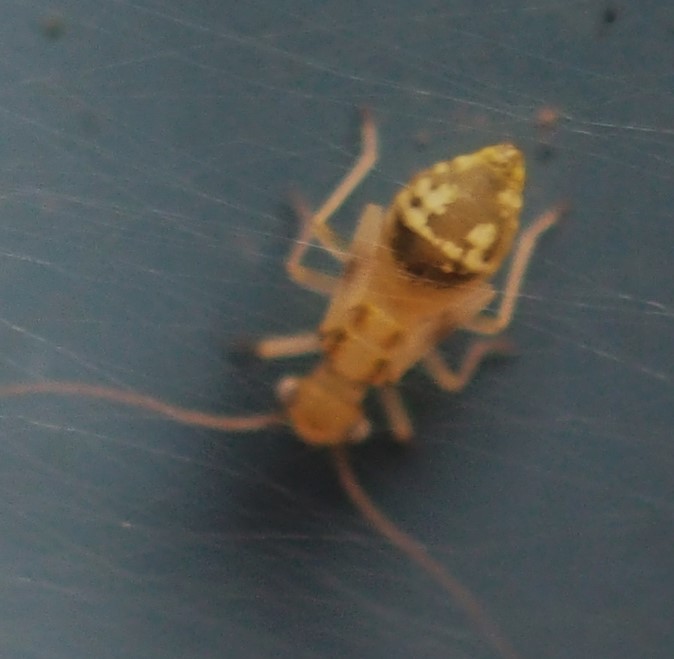
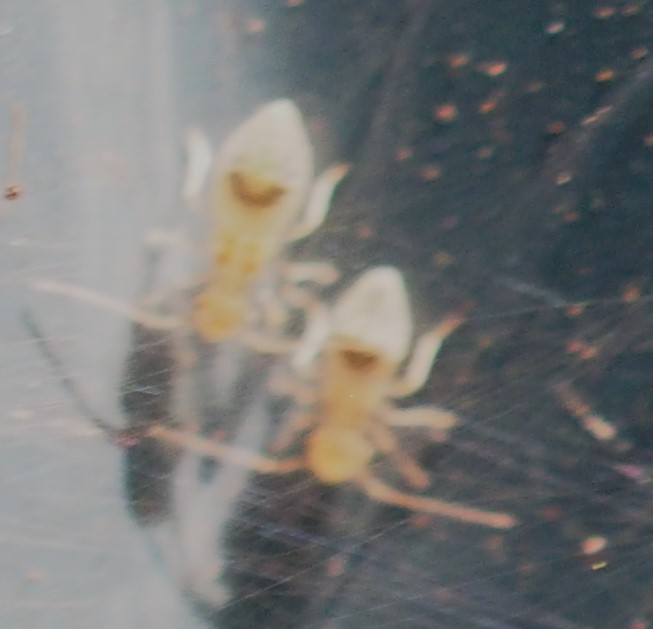
We had enough adult Trichadenotecnum members for a whole section. But we didn't see any of the encrusted Nymphs that we have come to expect in the development of this genus. Wait! I may have lied. Picture 3 seems to resemble a Barklouse nymph but instead of being encrusted with stratum dust, seems to be almost naked. Maybe this is where we get the encrusted ones, when they reach the age of shame and start to glue on their crusts.
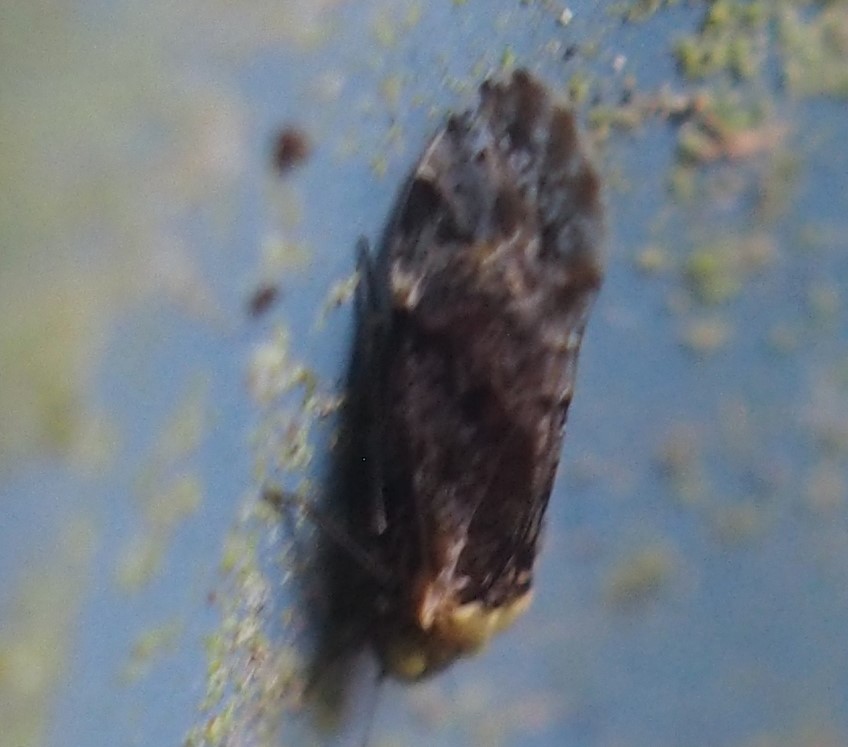
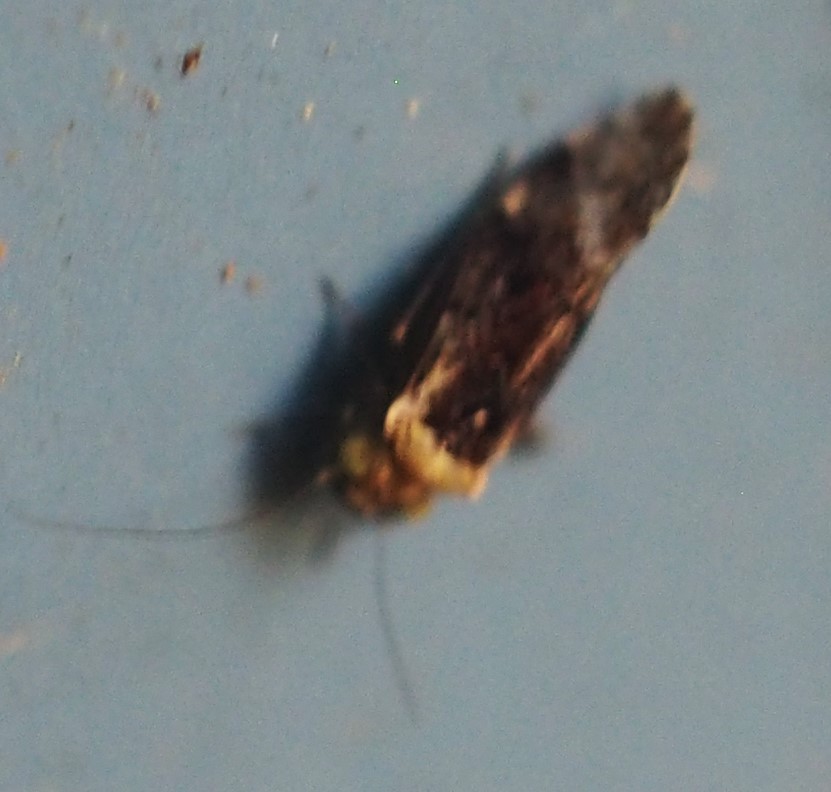
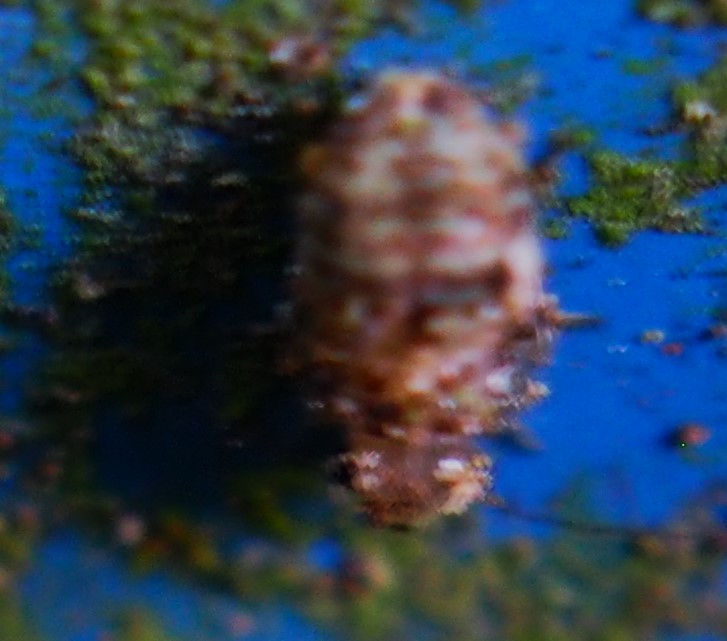
I had to ask Diane Young, author of the book-to-be on Psocids of Texas, what these fellows were. She ID'ed them as members of the genus Lachesilla, something I hardly ever see here.

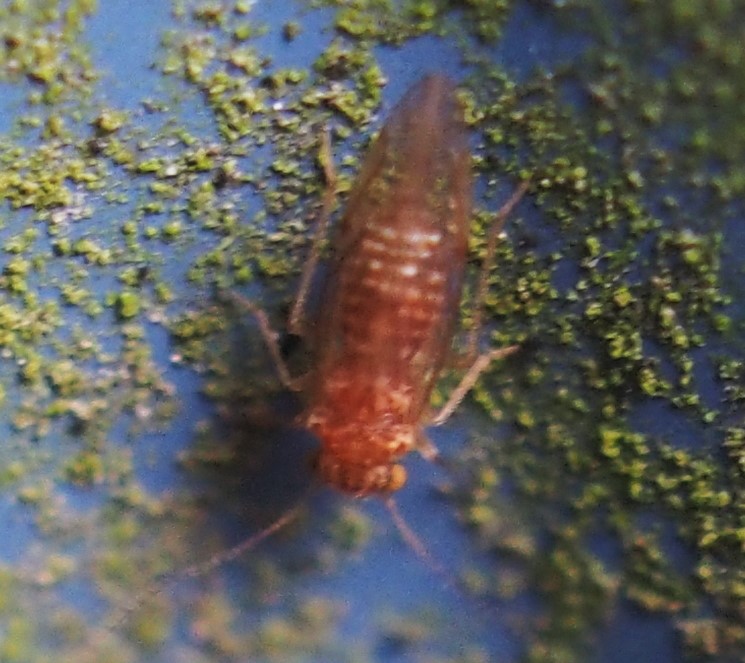
Here are a couple of mystery ones. I haven't seen Valenzuela flavidus for a very long time, and still don't think these ones belong.


On to the Flies! We experienced one of the best Fly Shows in a long time. Here are some of the ones that we will all agree look like Flies! This first one was introduced to us last week. It is one of the Root-maggot Flies. Second looks like a House Fly to me, maybe a bit bigger and with red eyes.

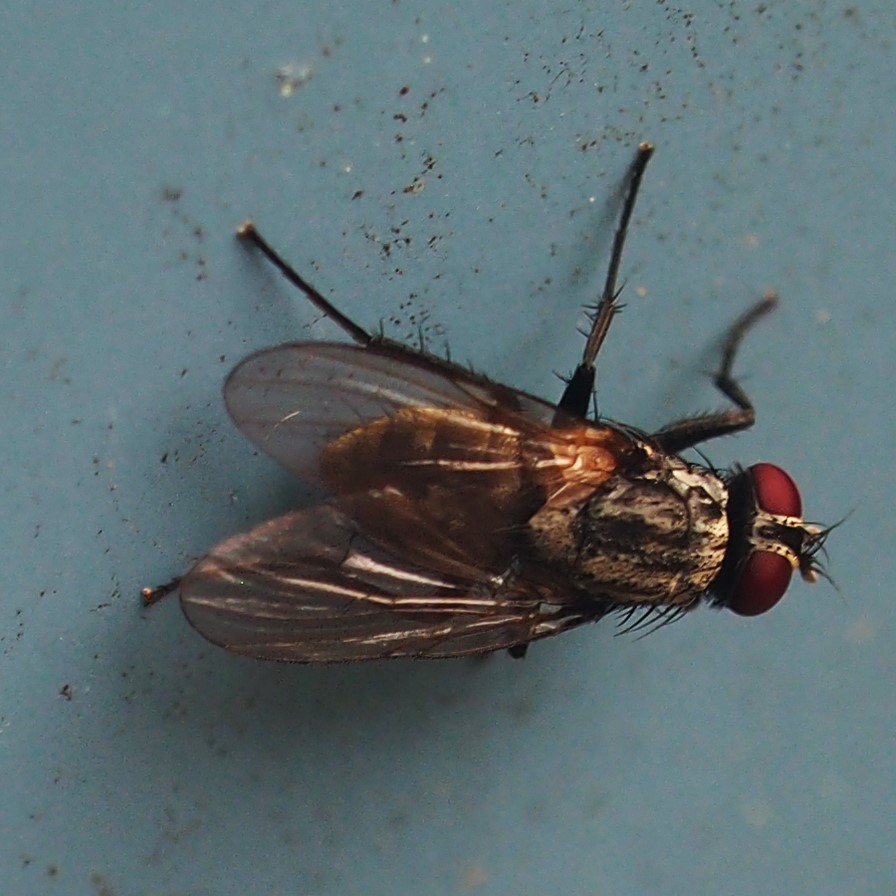
Another friend, probably a Greenbottle, two of them. Then another old friend, the Bathroom Moth Fly.

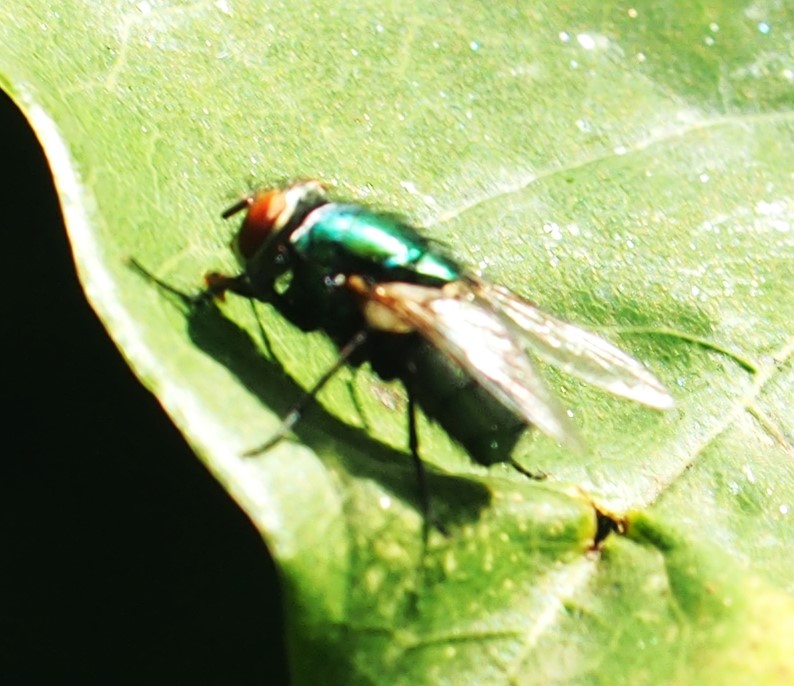

While we're admiring that last green one, here are a couple of shots of a Long-legged Fly. Now THAT's green. Third is everything BUT green. It looks as if it ought to be quite large, but in fact I had to push every button on this camera before it showed up, since it is really tiny.
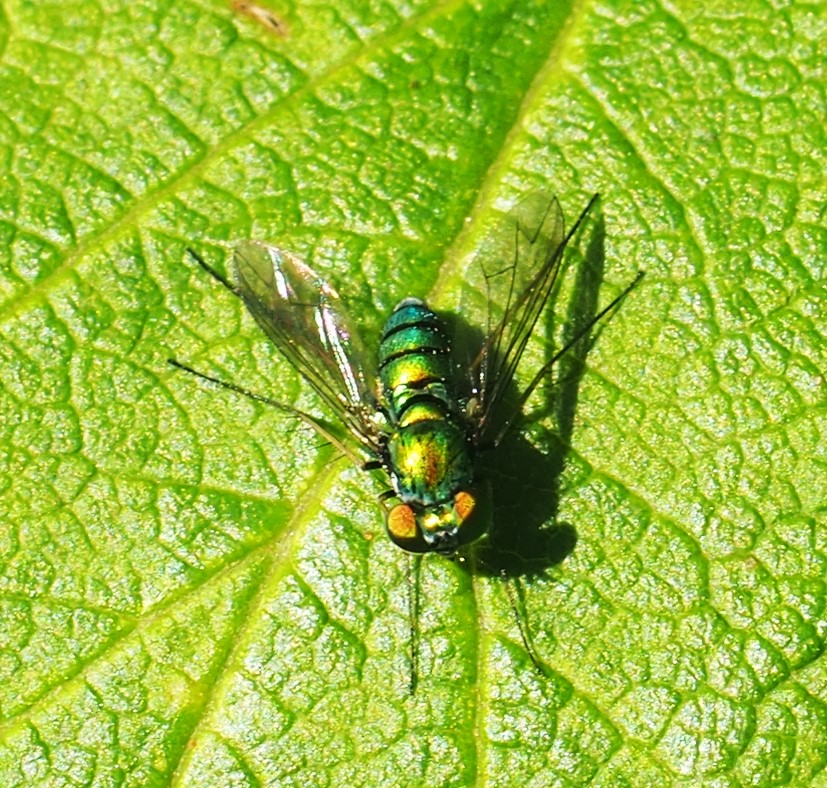

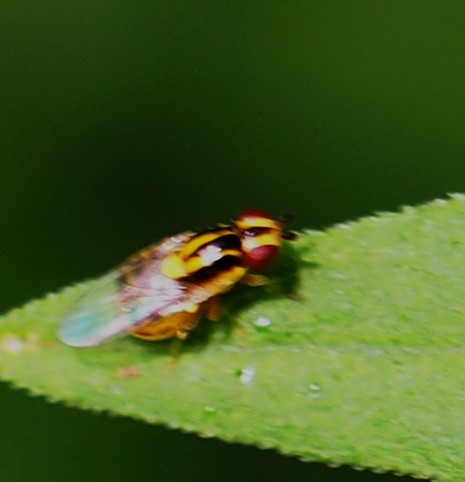
This first one is in tribe Pteromalini. We saw a relative last week. Next is a Mosquito or Midge. Last is a large Crane Fly, Tipula furca.
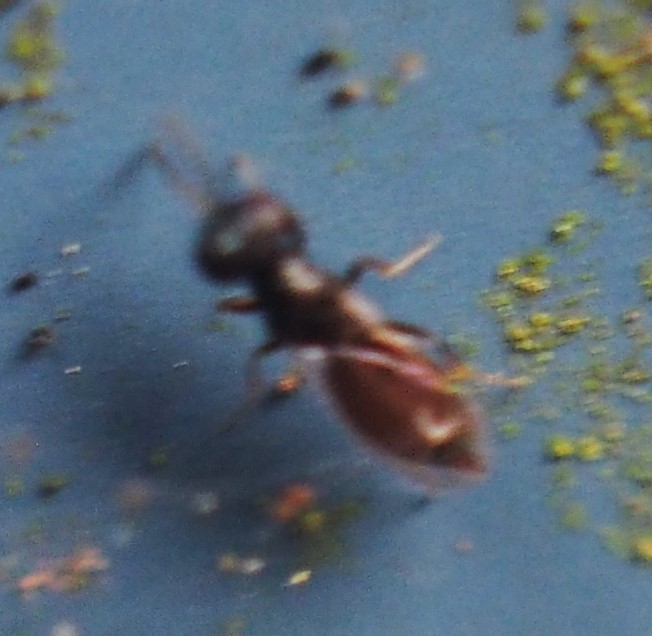
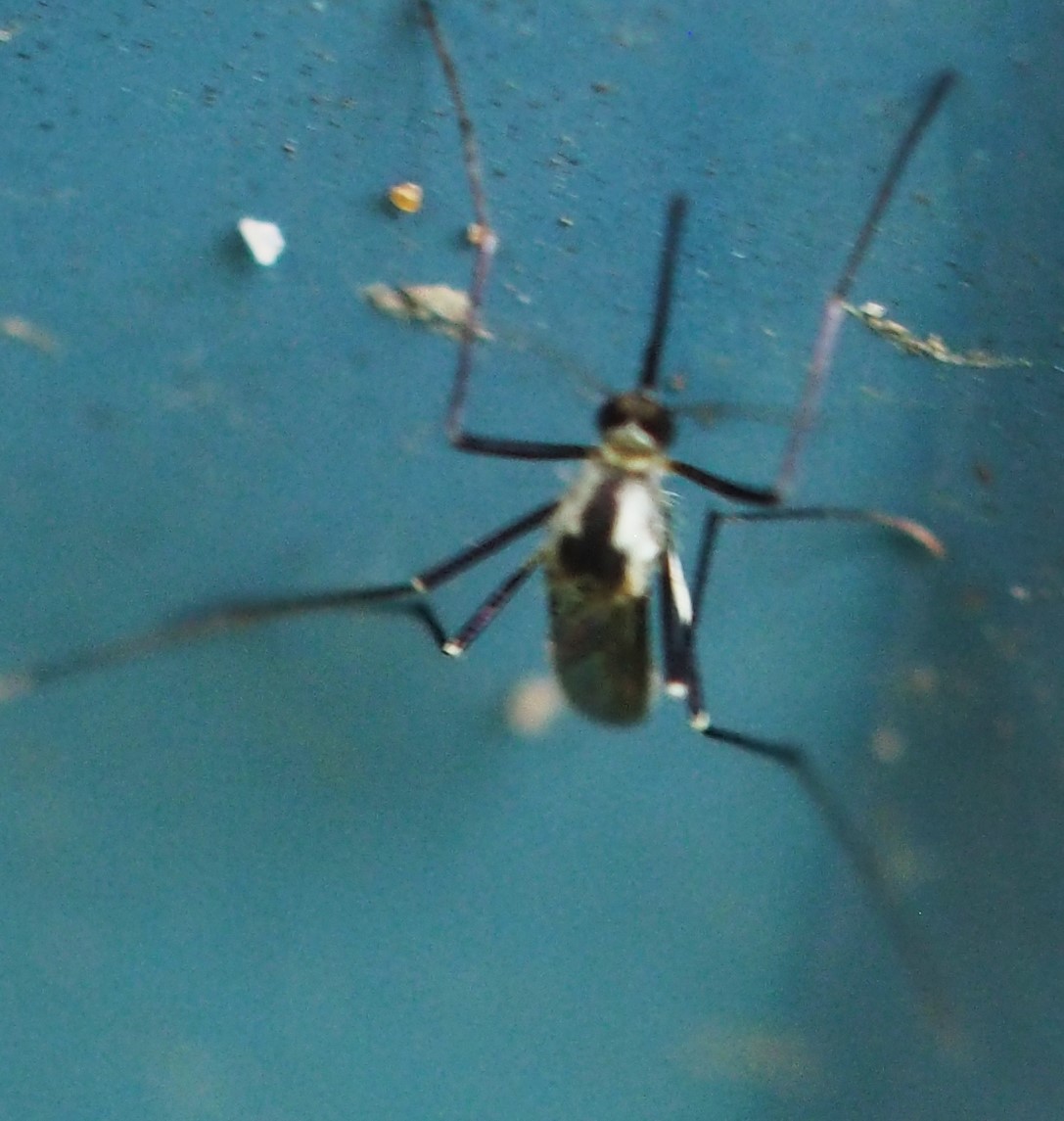
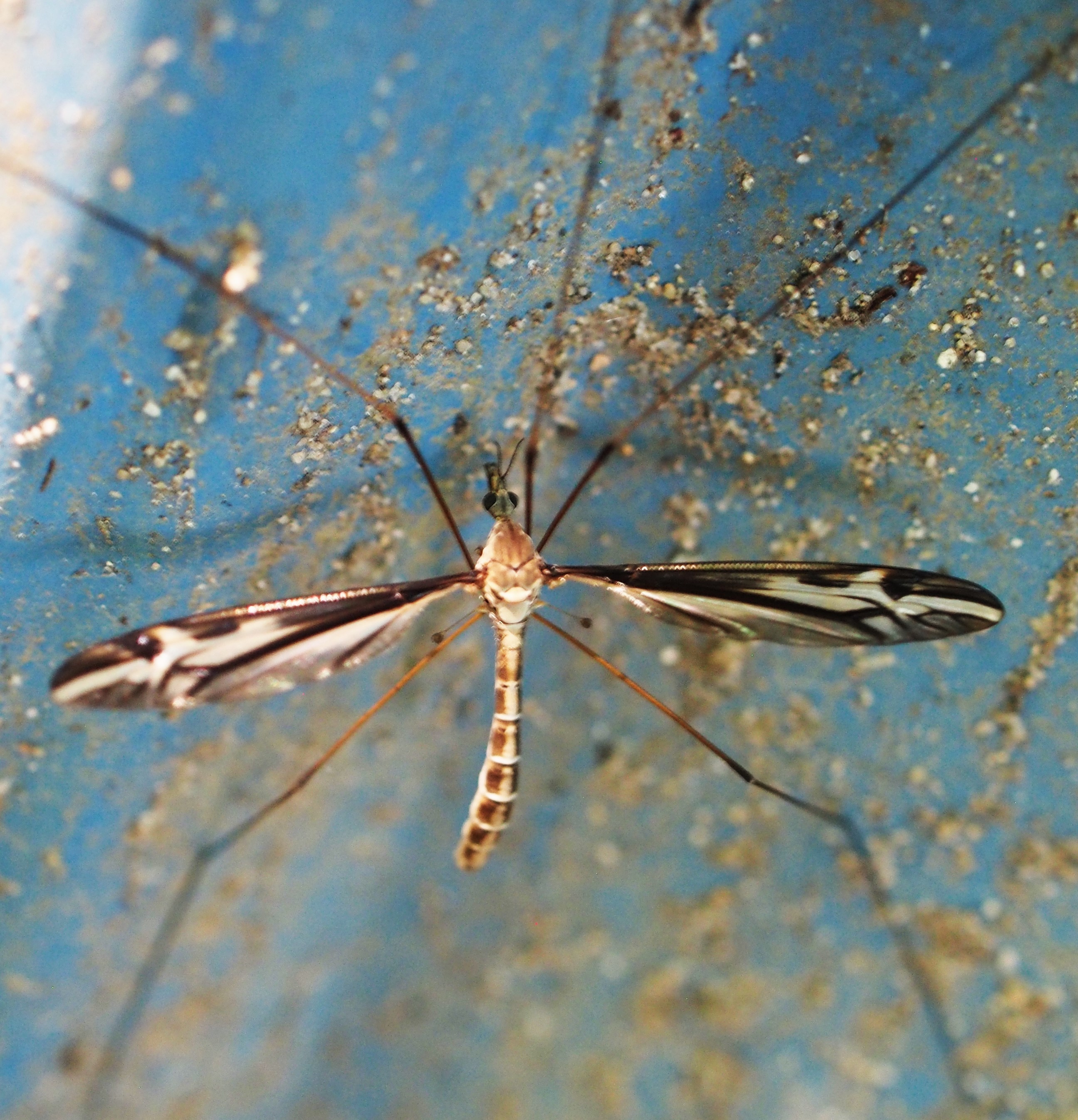
Last but not least, the Norway Maple Pigmy Moth has been "blooming" constantly for all we have seen of Summer. It is only a couple of millimeters long, and since we have so many Norway Maples overhead all summer, making this one of the shadiest "gardens" in town, we gratefully accept their gift of this tiny Moth. (Every day I have to net up the floating plant matter that floats on top of the pond, and most of that is Maple wings.) The next Moth is the Porcelain Gray. I don't recognize the brownish look-alike in picture 3.
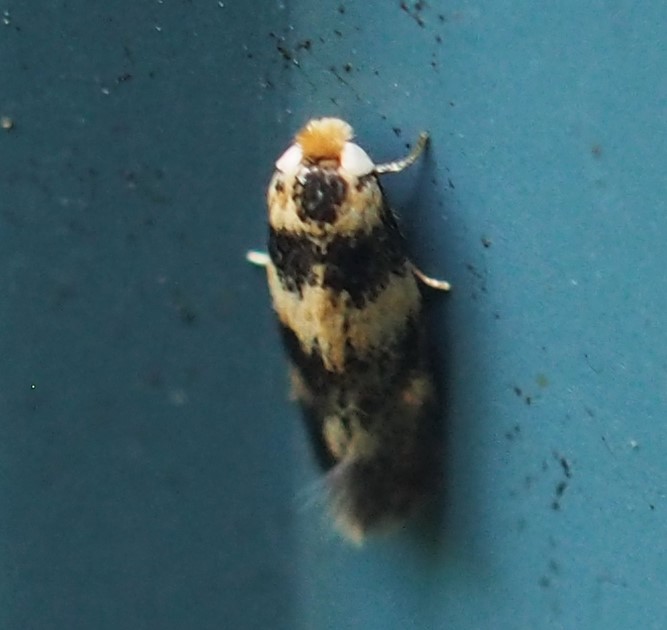
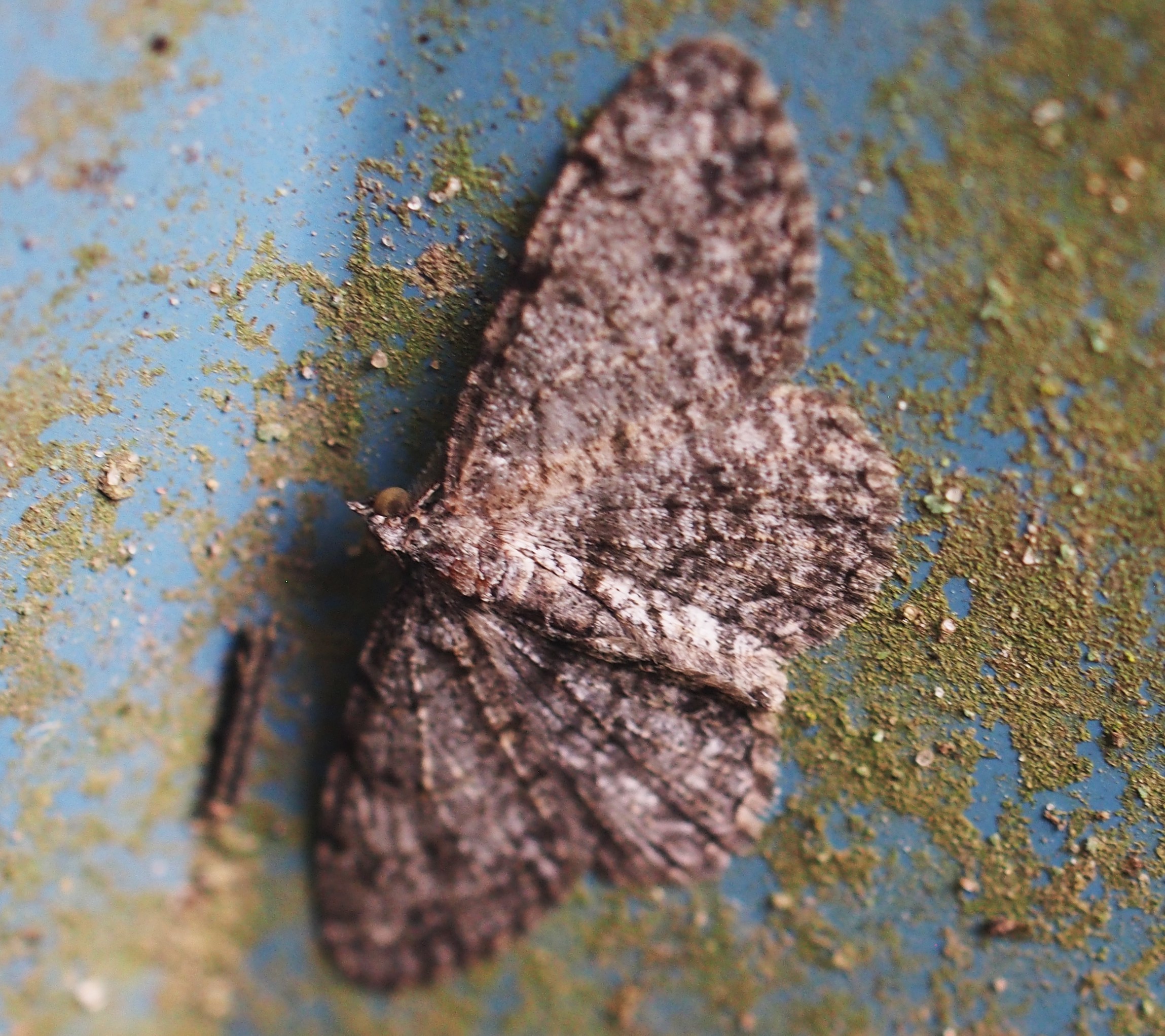

All right. It's time for our weekly Flower Walk. First is the Japanese Anemone, which looks as if it will be having a nice show in a few weeks. Next are a couple of shots of that delicate Asiatic Dayflower.
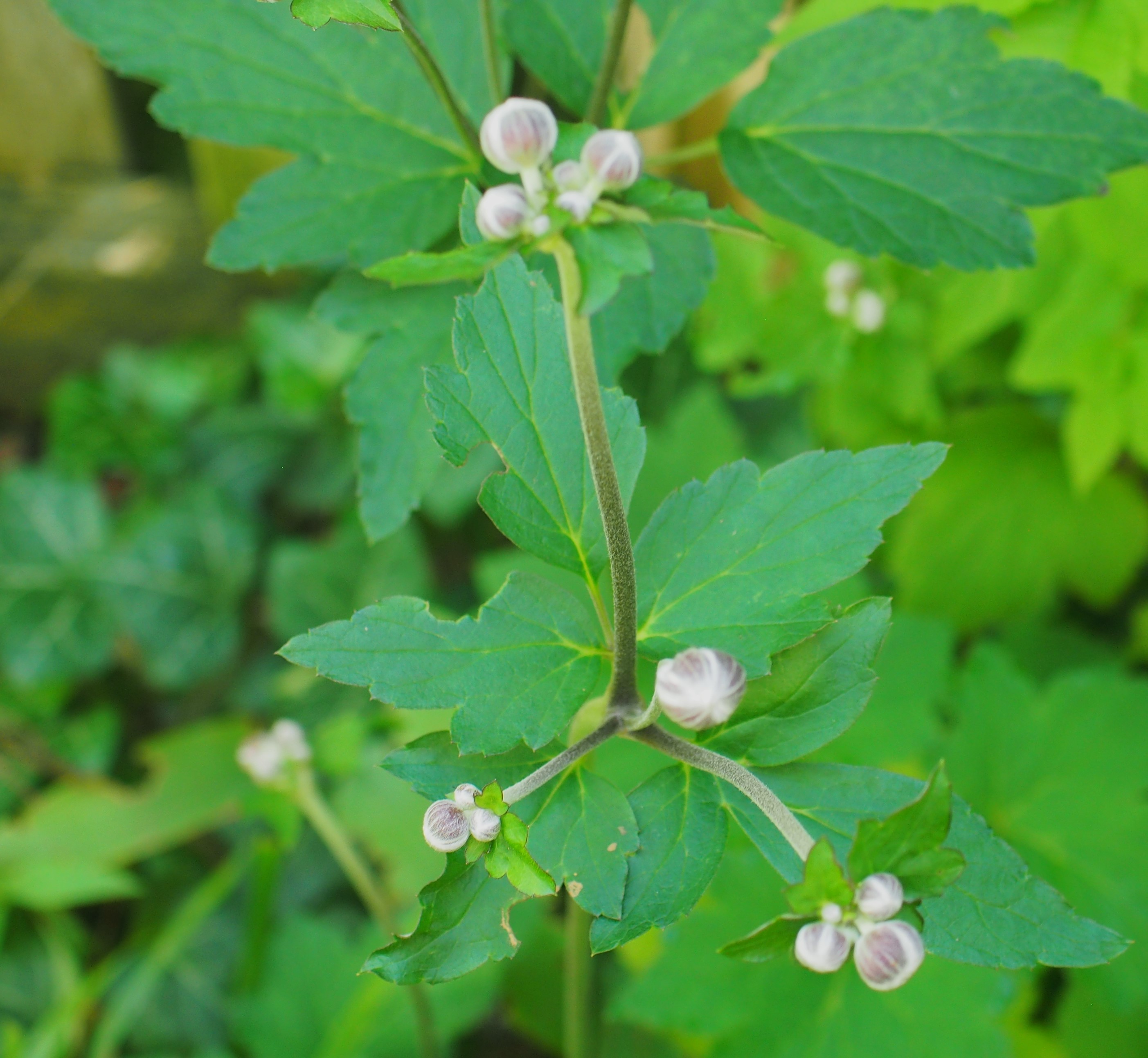
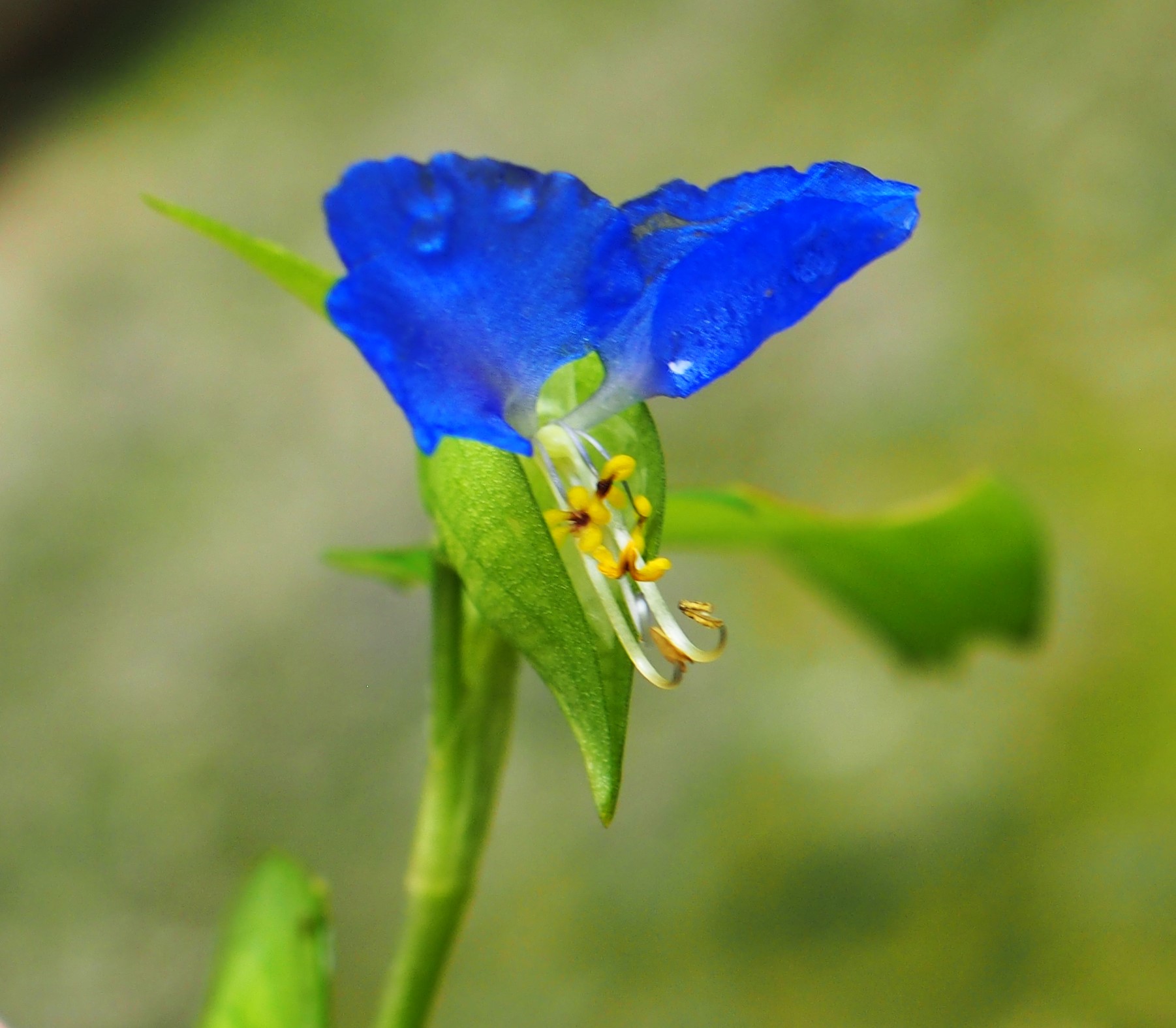
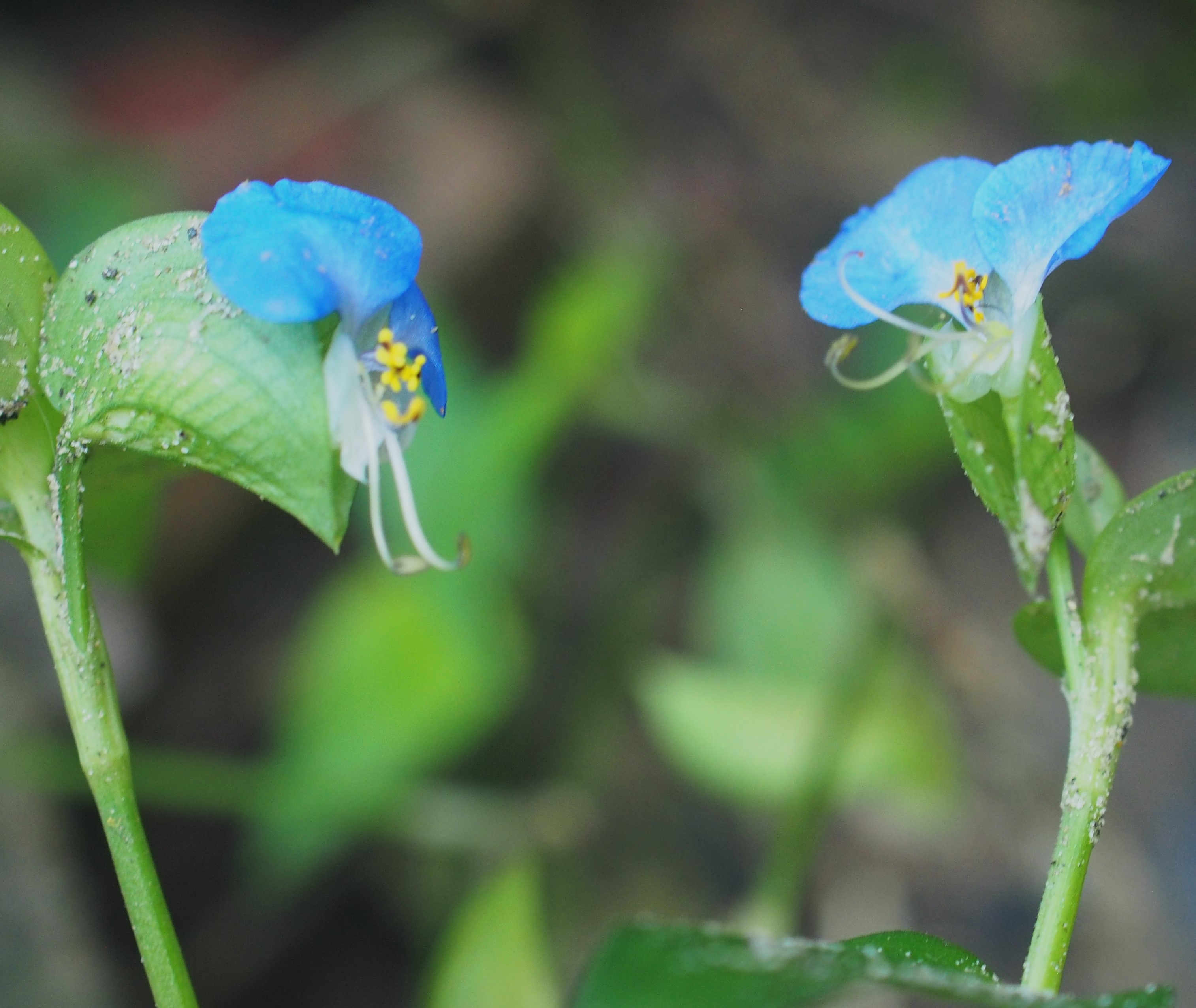
Just to make sure I don't miss one of the Flowers, I'm going alphabetically here and there.
Here are the Blackberries ripening on those killer vines. Next is the Goldenrod aiming for its name with those ever-more-golden flower buds. And third is that cultivated Phlox from Horrocks.


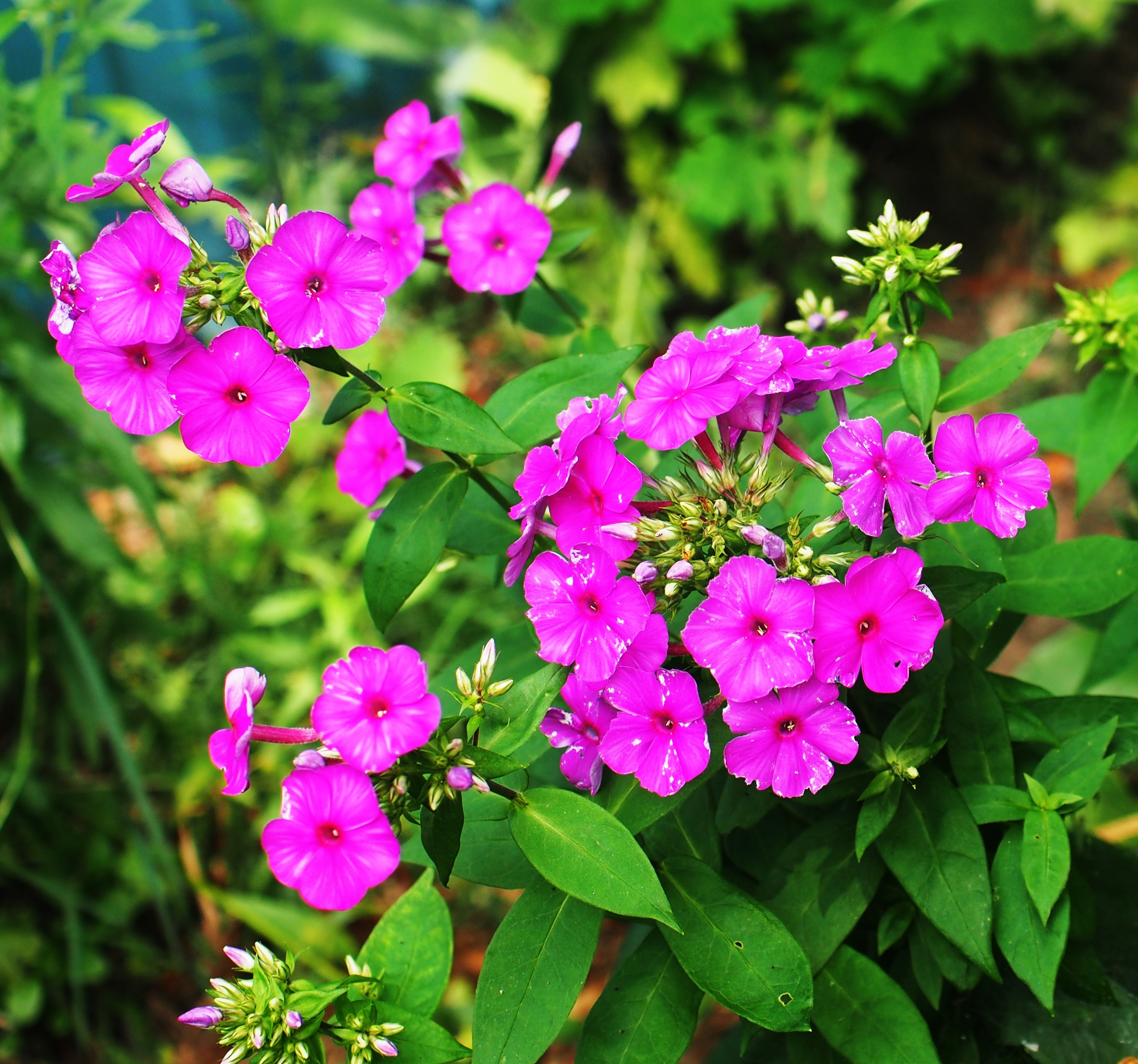
First here is the Tall Golden Evening Primrose, looming above my head. Next is the Trumpetvine, high in the sky (almost).

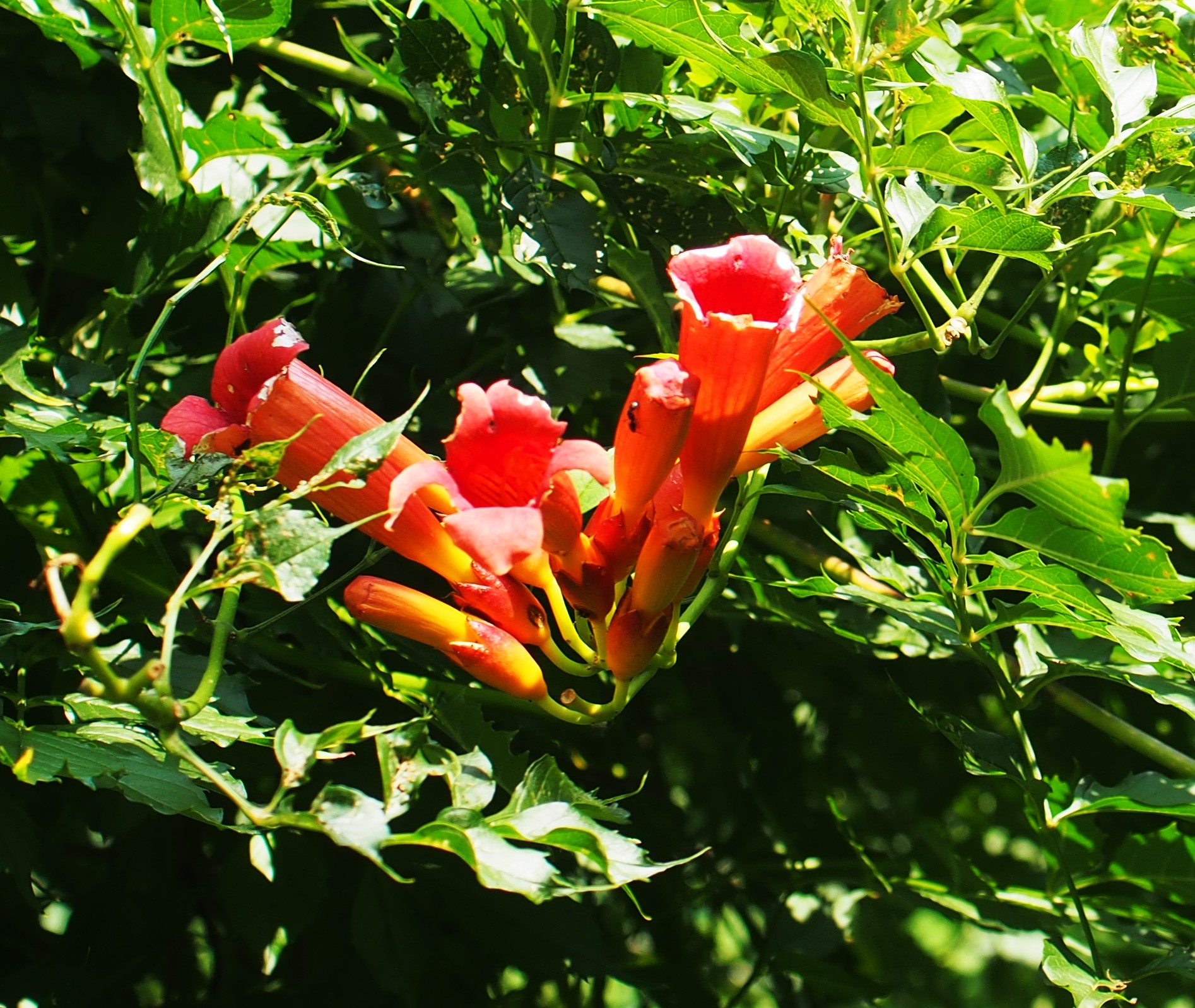

Finally, the Coral Berries that make such a nice accent in the Winter also provide the first food of the lovely little Fraternal Potter Wasp and Northern Crab Spiders. What tiny flowers they begin with!
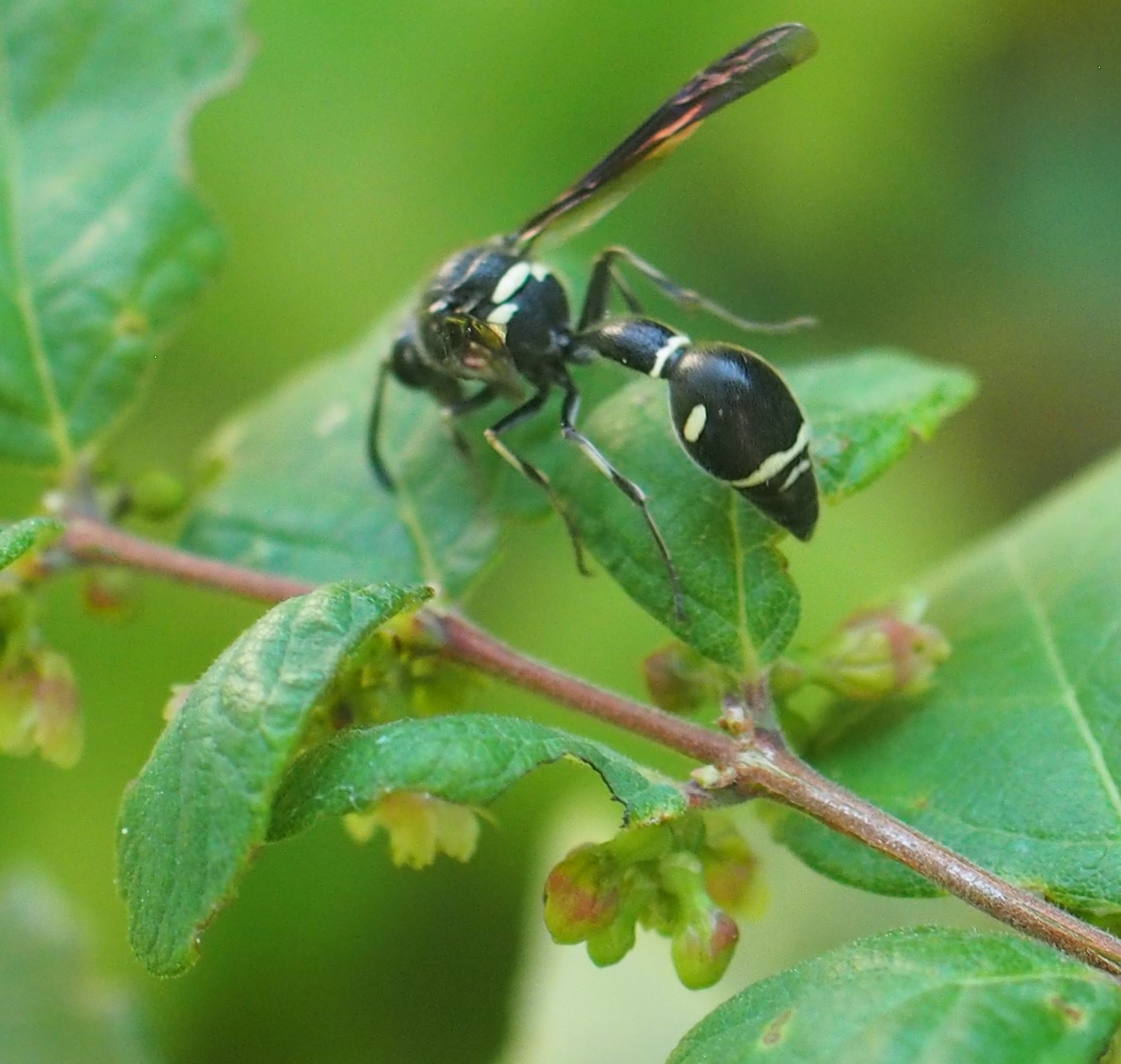
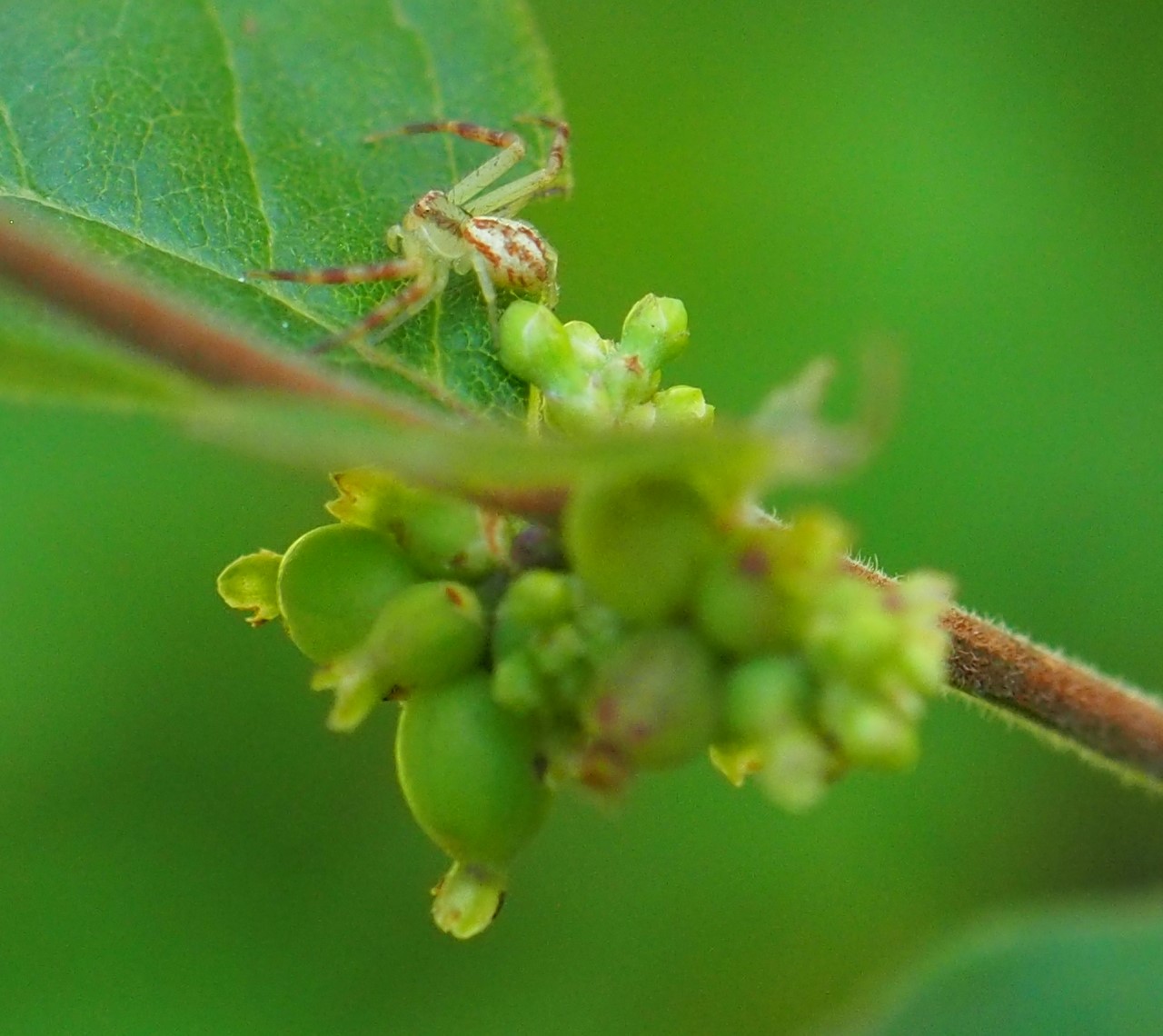
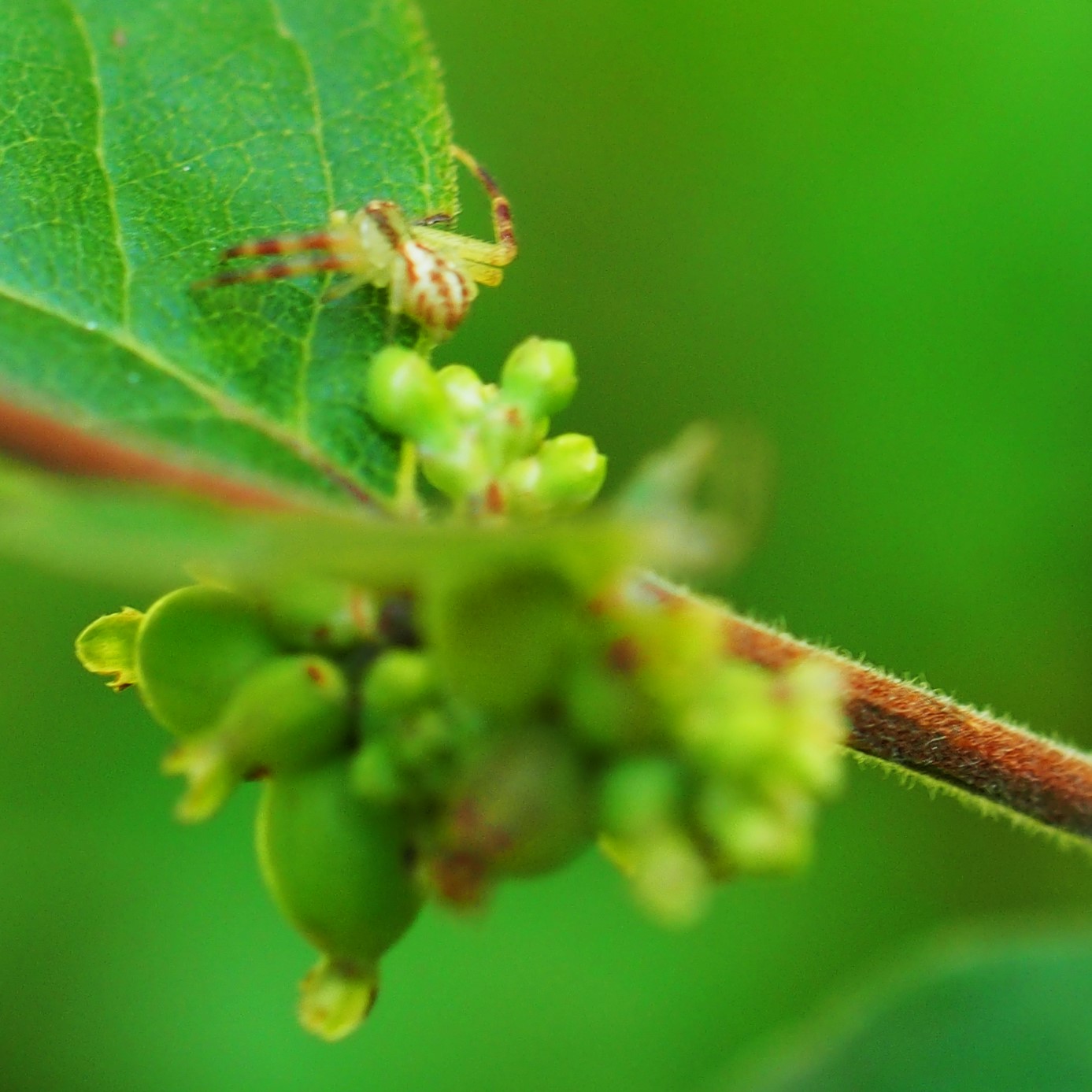
How could I forget the Water Lilies? Here they are on August 19, the first day of bloom for the deeper pink one. Picture 2 shows them in the afternoon when they are fully opened.
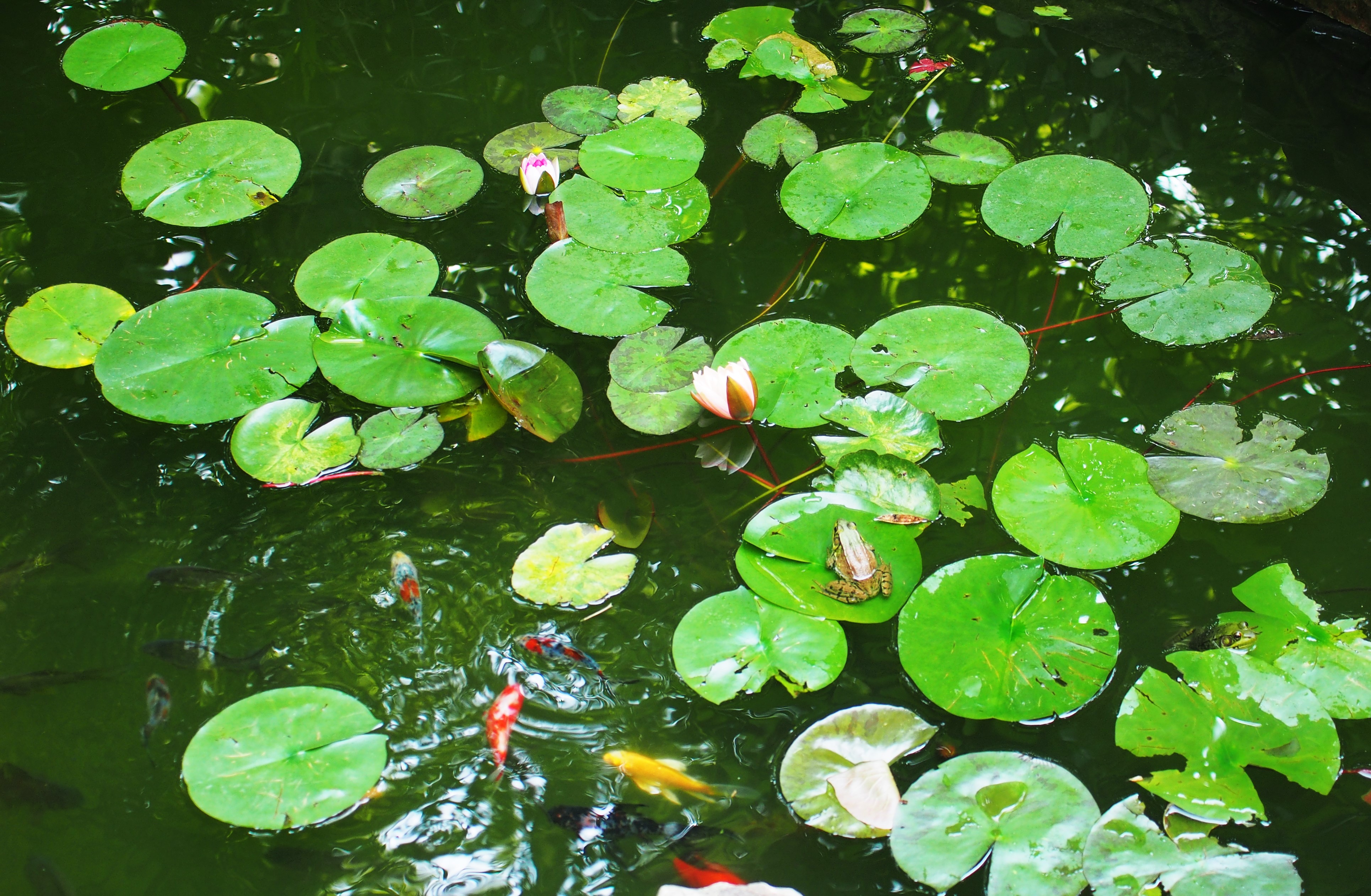
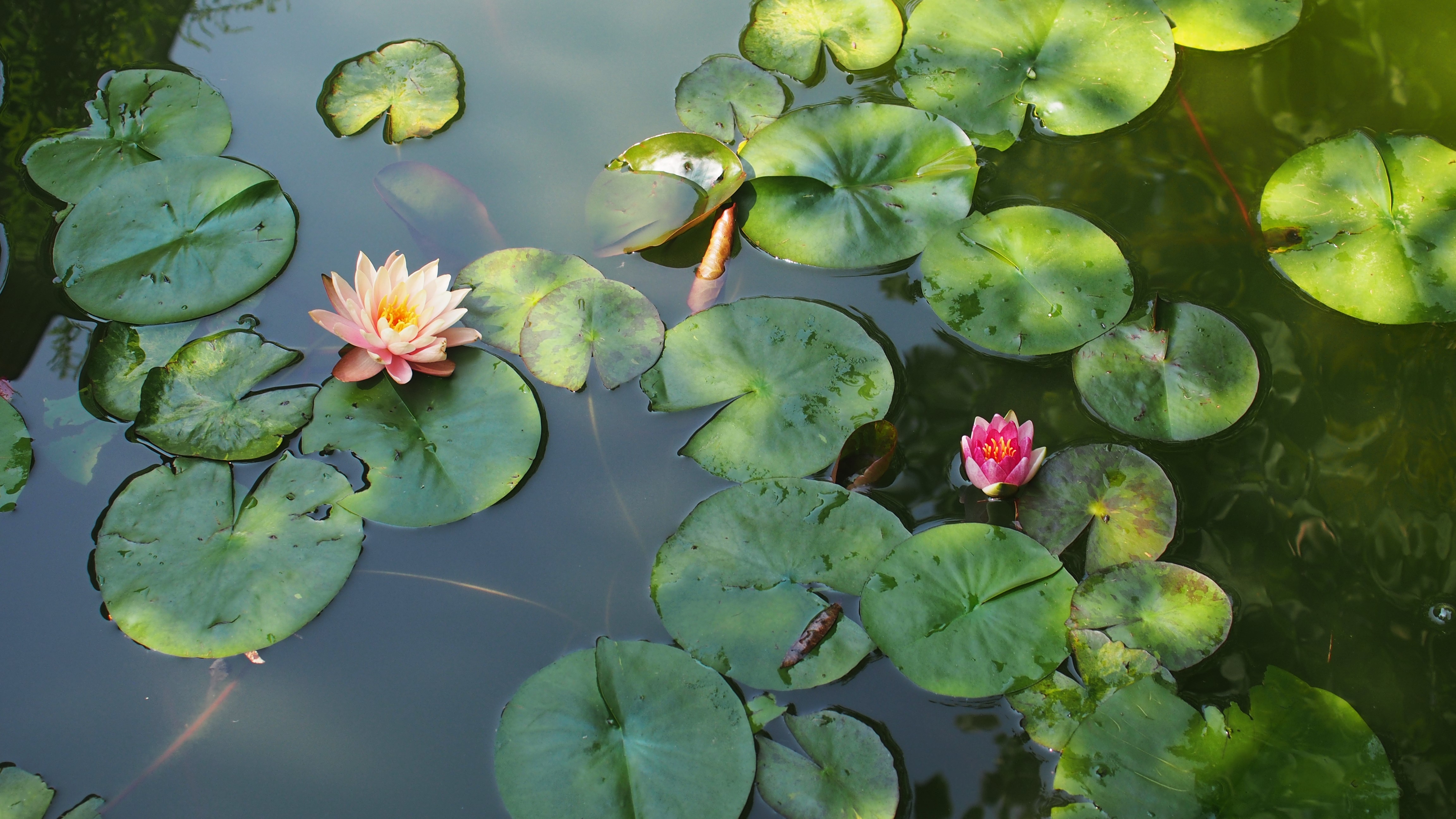
I think that was it for the Flower Walk. Let's now see what we know about the various Spiders that hang around on the Wall. The first very small one is a Cellar Spider. I'm pretty sure the next one is the Common House Spider. The third one seems to be two spiders in a brawl.
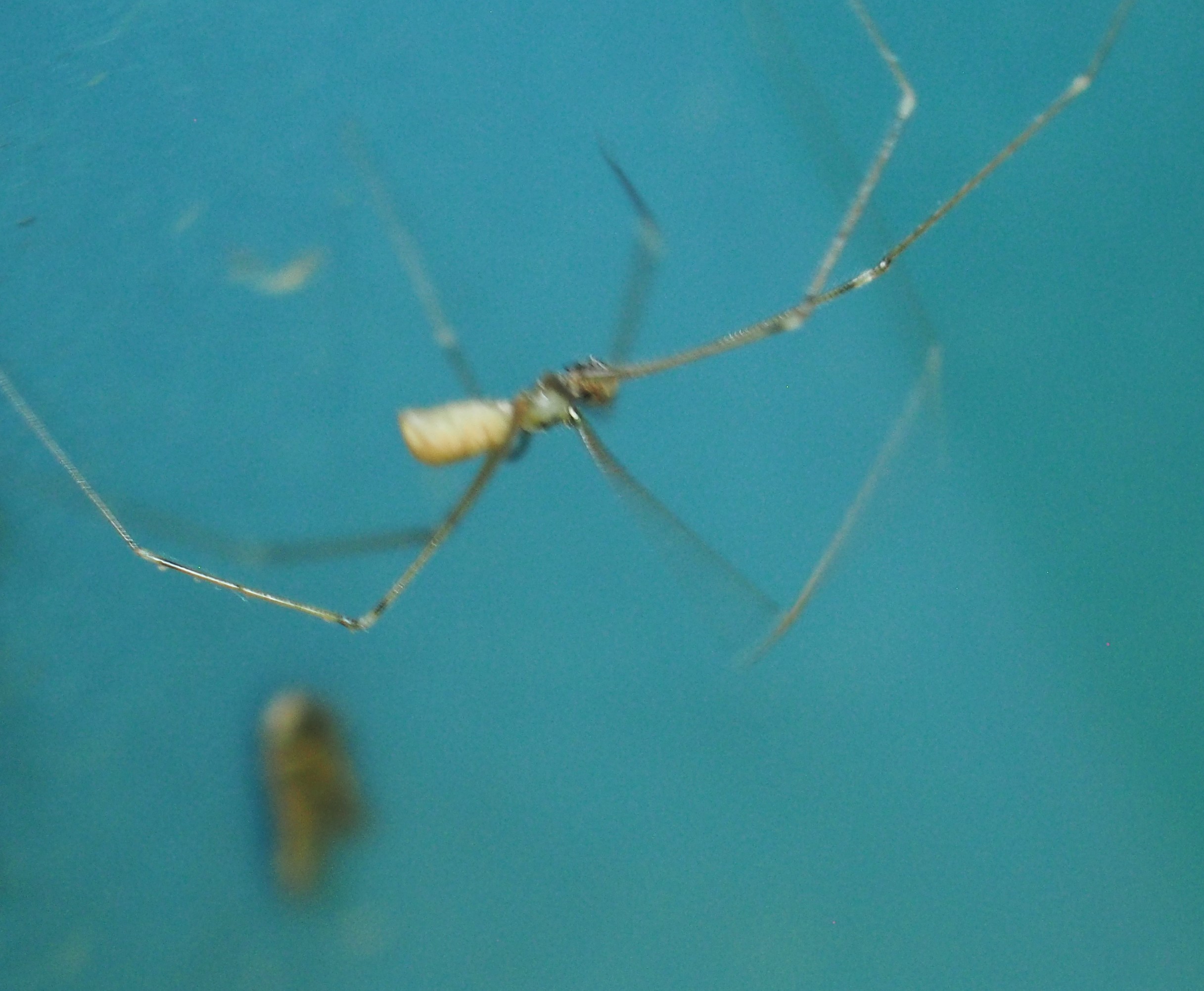
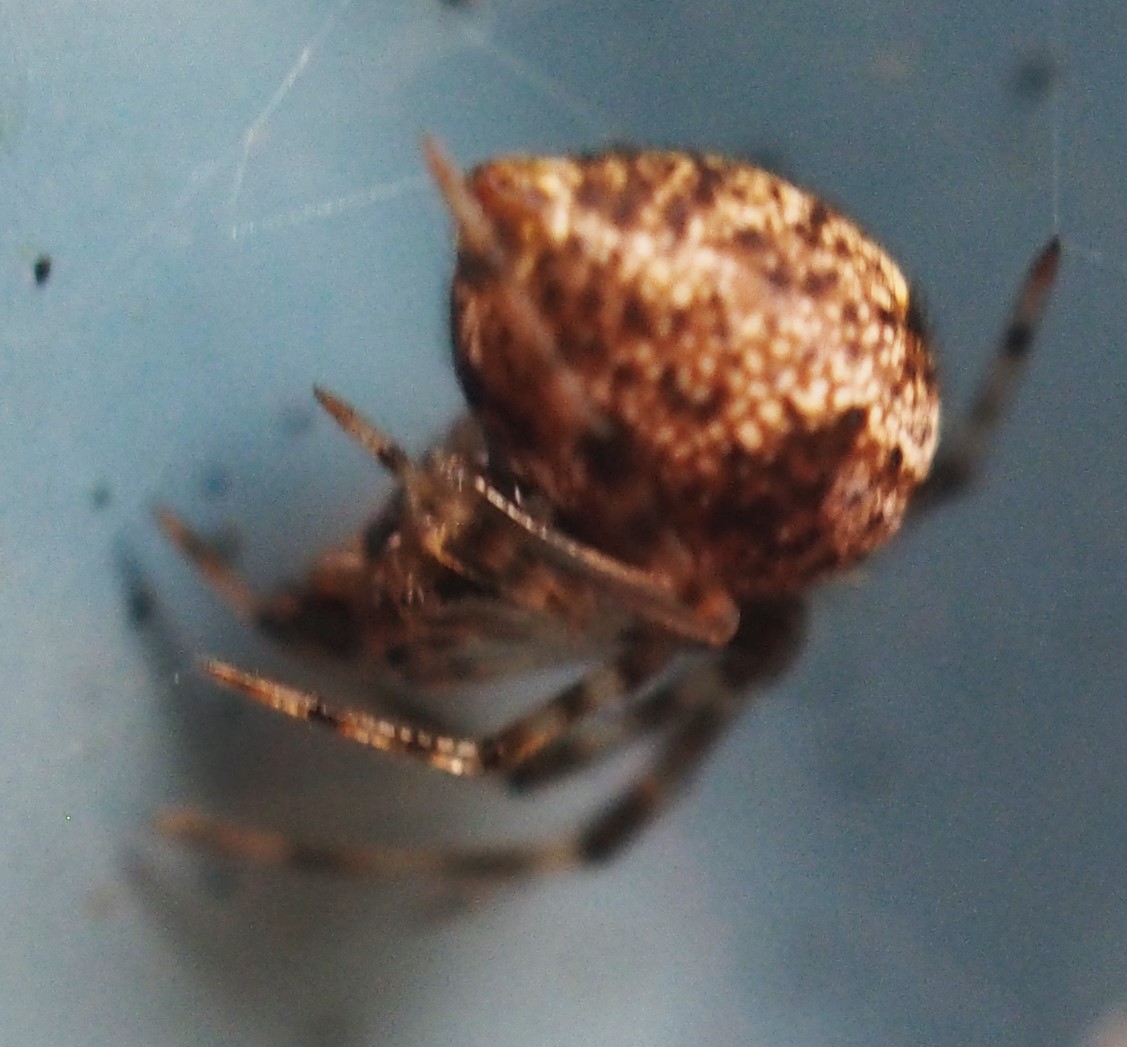
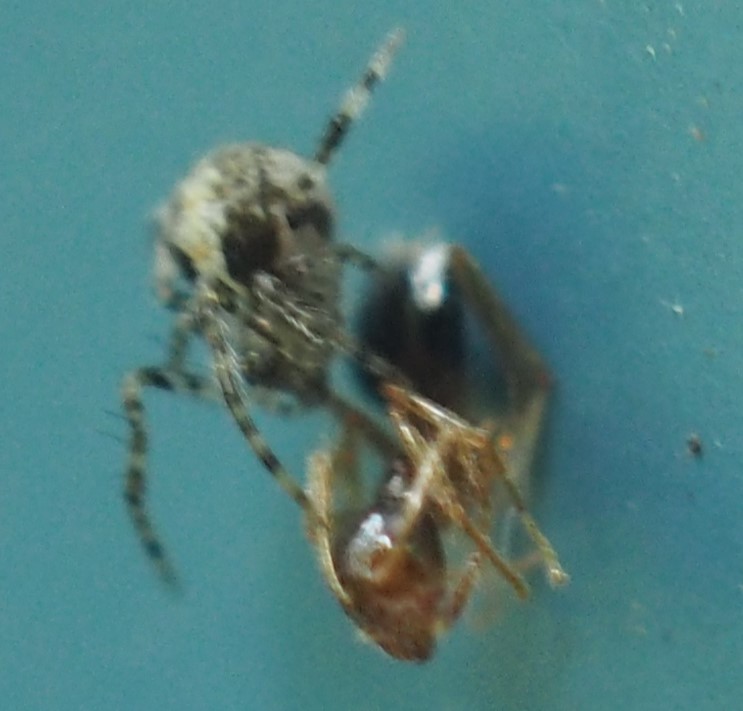
First, a Jumping Spider that I've never noticed before. Then one that seems to have won a
cup for some feat of prowess. Here he is trying to get it installed into his web.

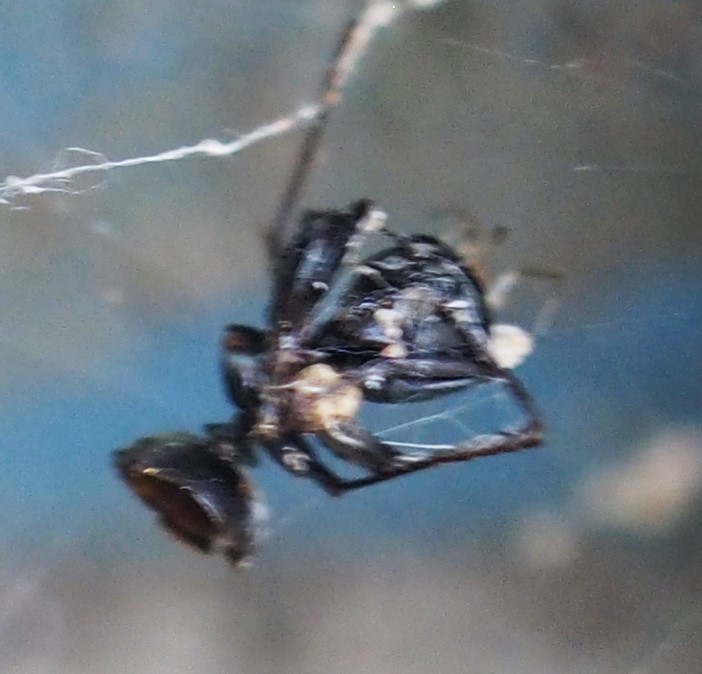
I'm sorry to say that was the end of the Spider pictures. We do have some more kinds of living things things though. For instance, here we see a male North American Spur-throated Grasshopper in genus Melanoplus and a female Scudder's Katydid. For those who wonder how to tell the difference in the sexes, it's the FEMALE that possesses the ovipositor that resembles a scimitar. In picture 2, it is the curved black end of the abdomen. @Brandonwoo of iNat identified the grasshopper's genus as above, and says the Katydid is either Scudderia furcata or S. fasciata.
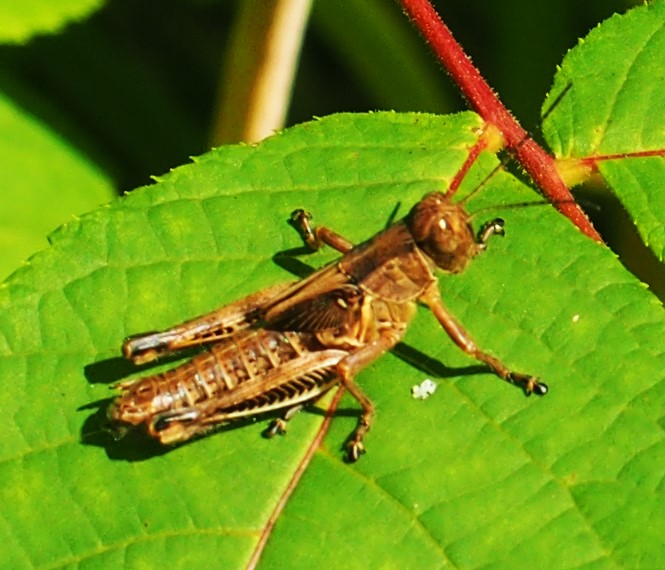
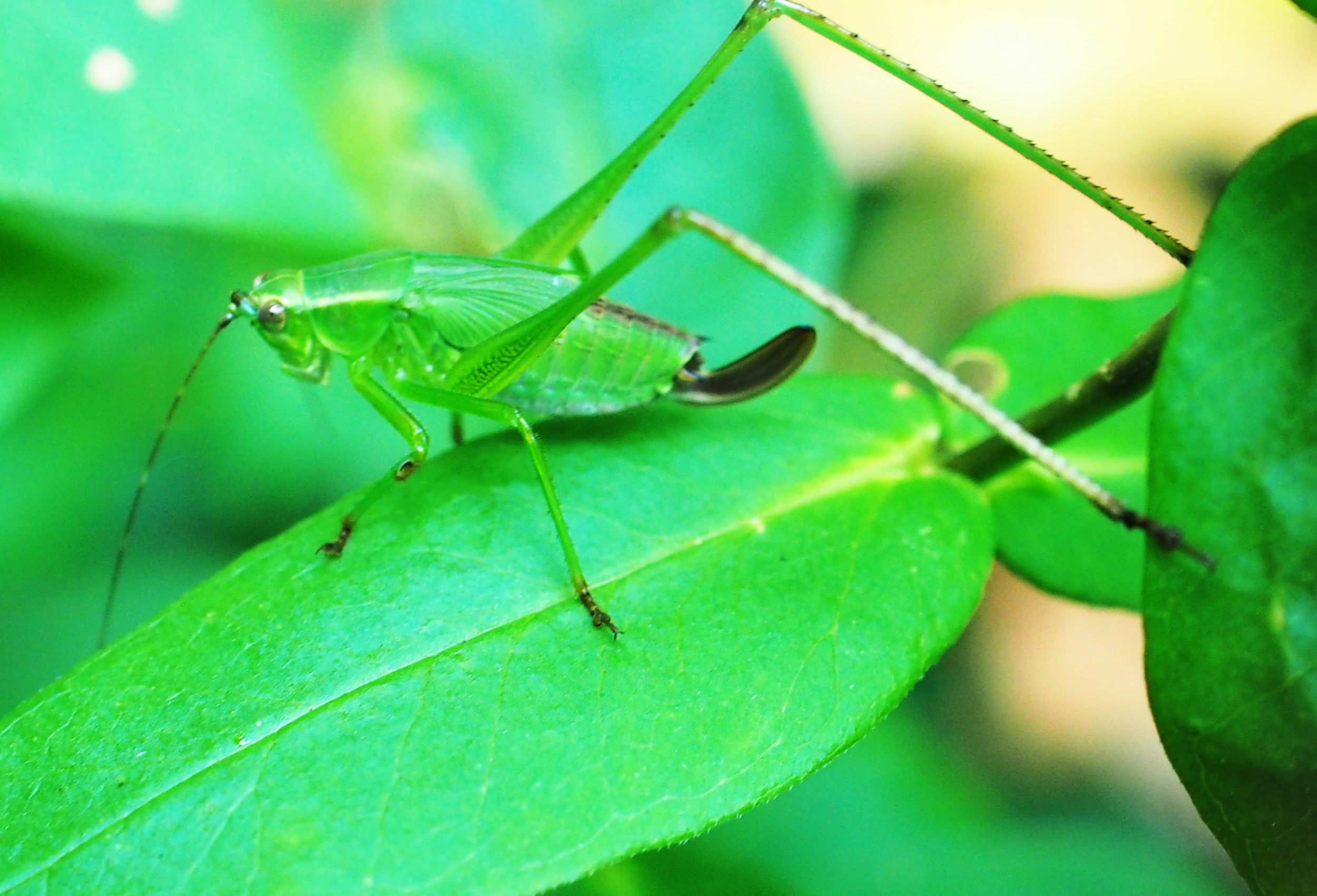
Let's now go to the Frogs. Here are a couple (male (left) and female (right)) who sat side by side for a long time today. Next is one of the very young frogs I started seeing a couple of weeks ago. Picture 3 shows Tonguey next to one of the Tinies.
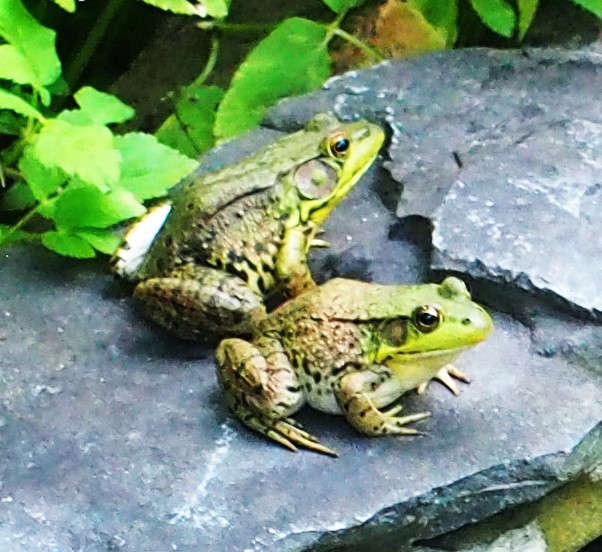
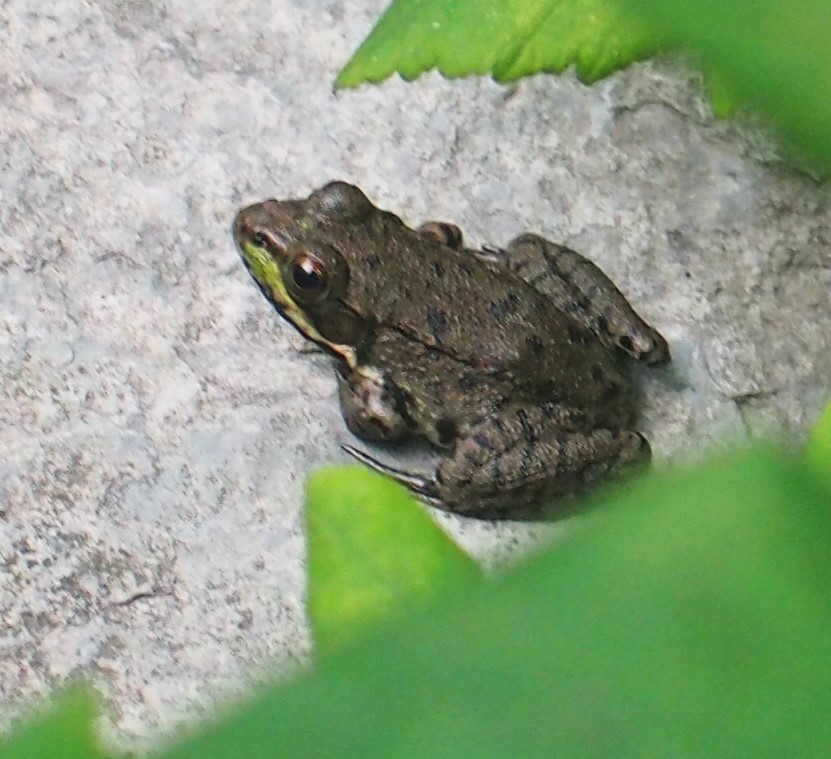
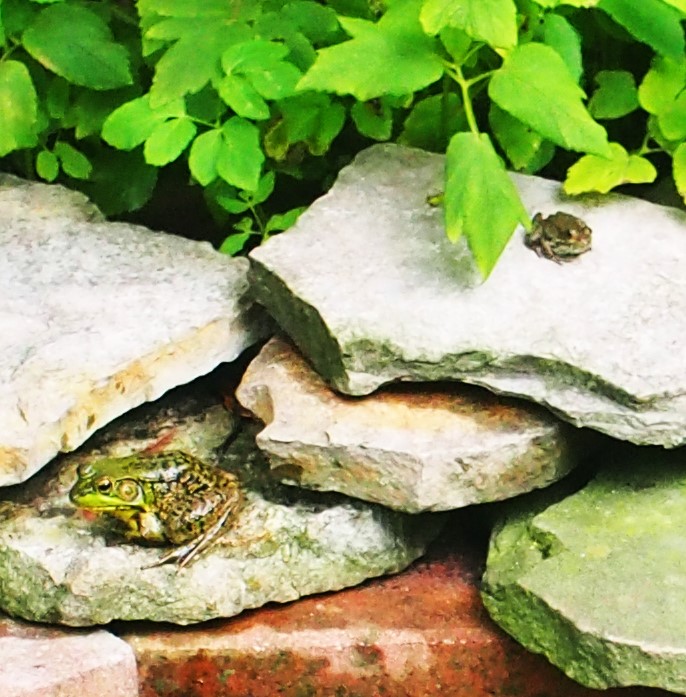
Well, once more we are surprised to see a Springtail. I hadn't seen one of these since Spring (until last week, when this same kind appeared out there!).
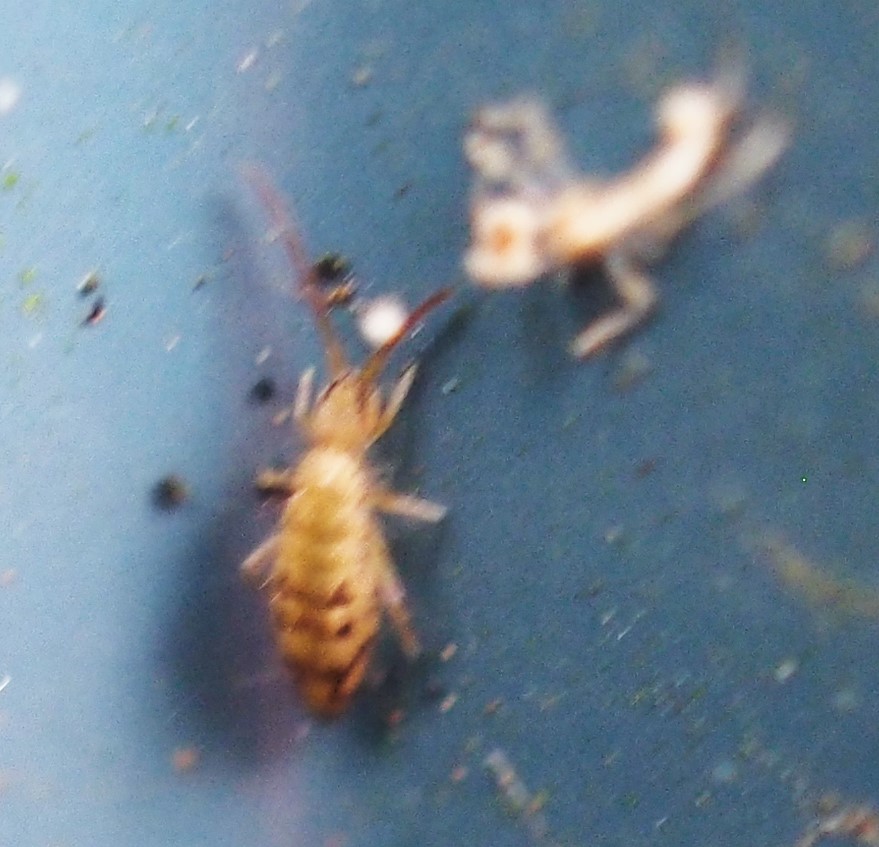
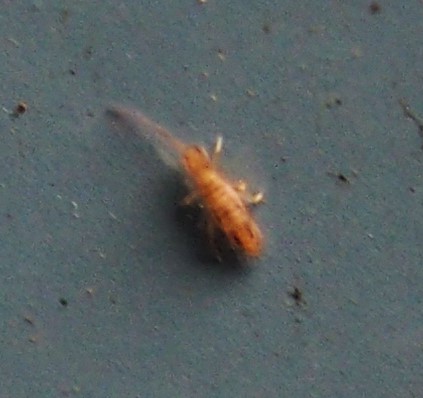
We still have a few little tiny Wasps. Here is one of them.
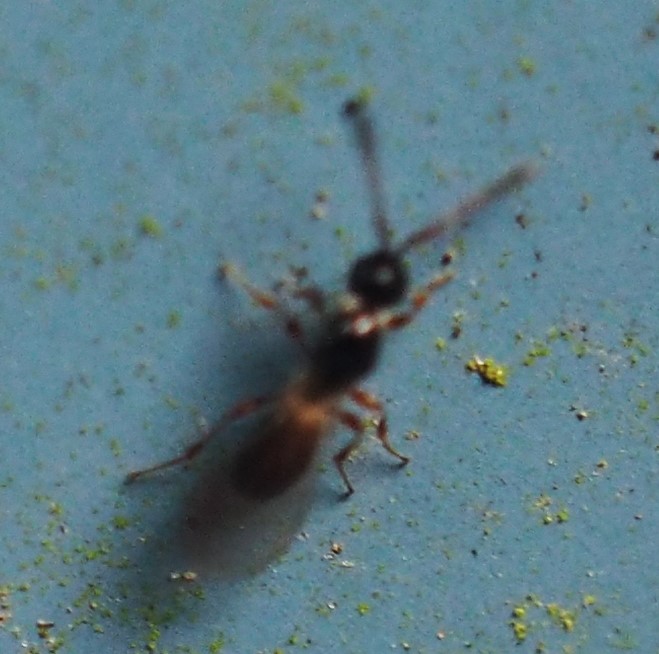
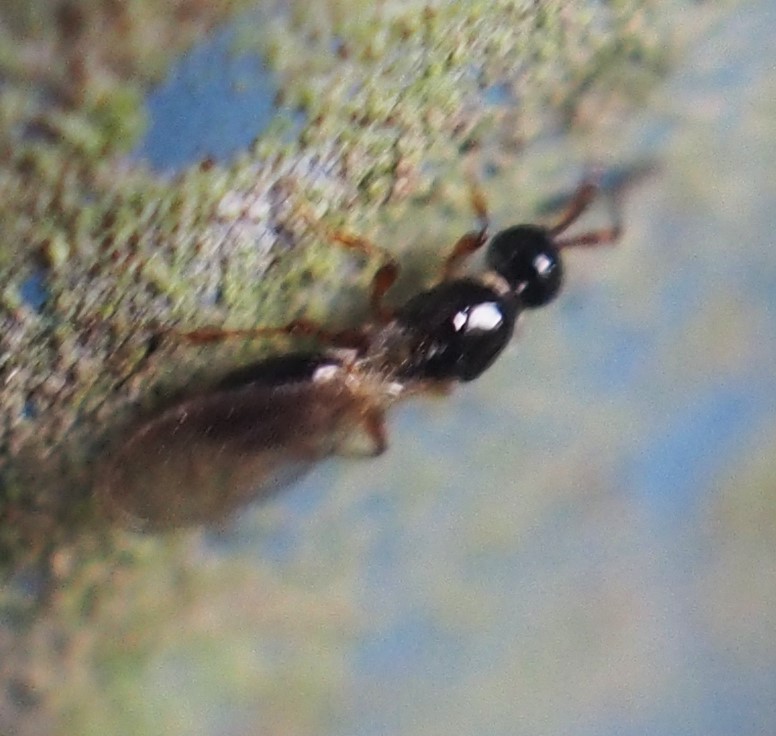
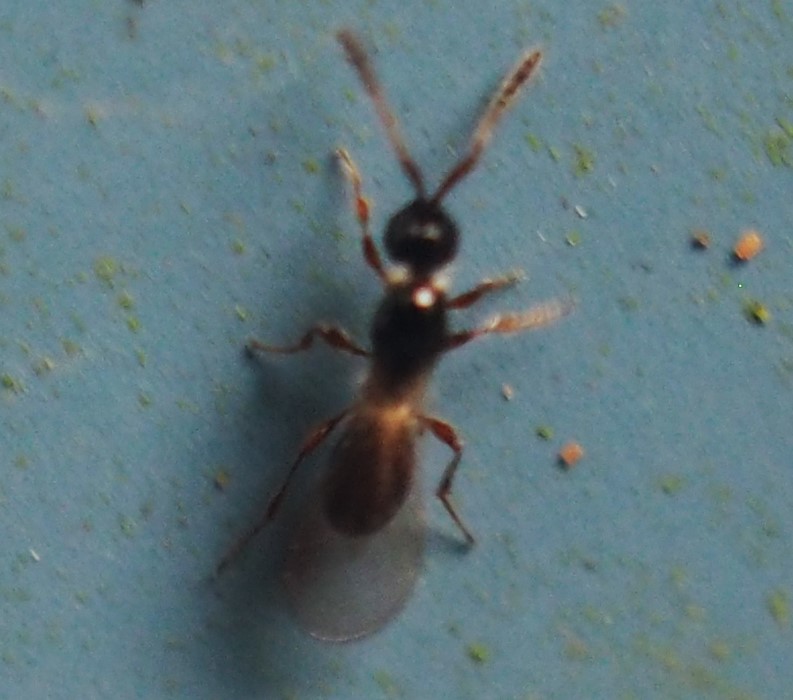
Last week we saw a Scorpionfly, and I pointed out that just because it has the word "fly" in its spelling, that doesn't make it a Fly. Here is one from this week. The second picture is also named with the word "fly" -- a Stream Mayfly. That also isn't a Fly. It's one of the aquatic insects that only lives one day. It seems to have two wings, which usually signals a Fly. But it still isn't a Fly.
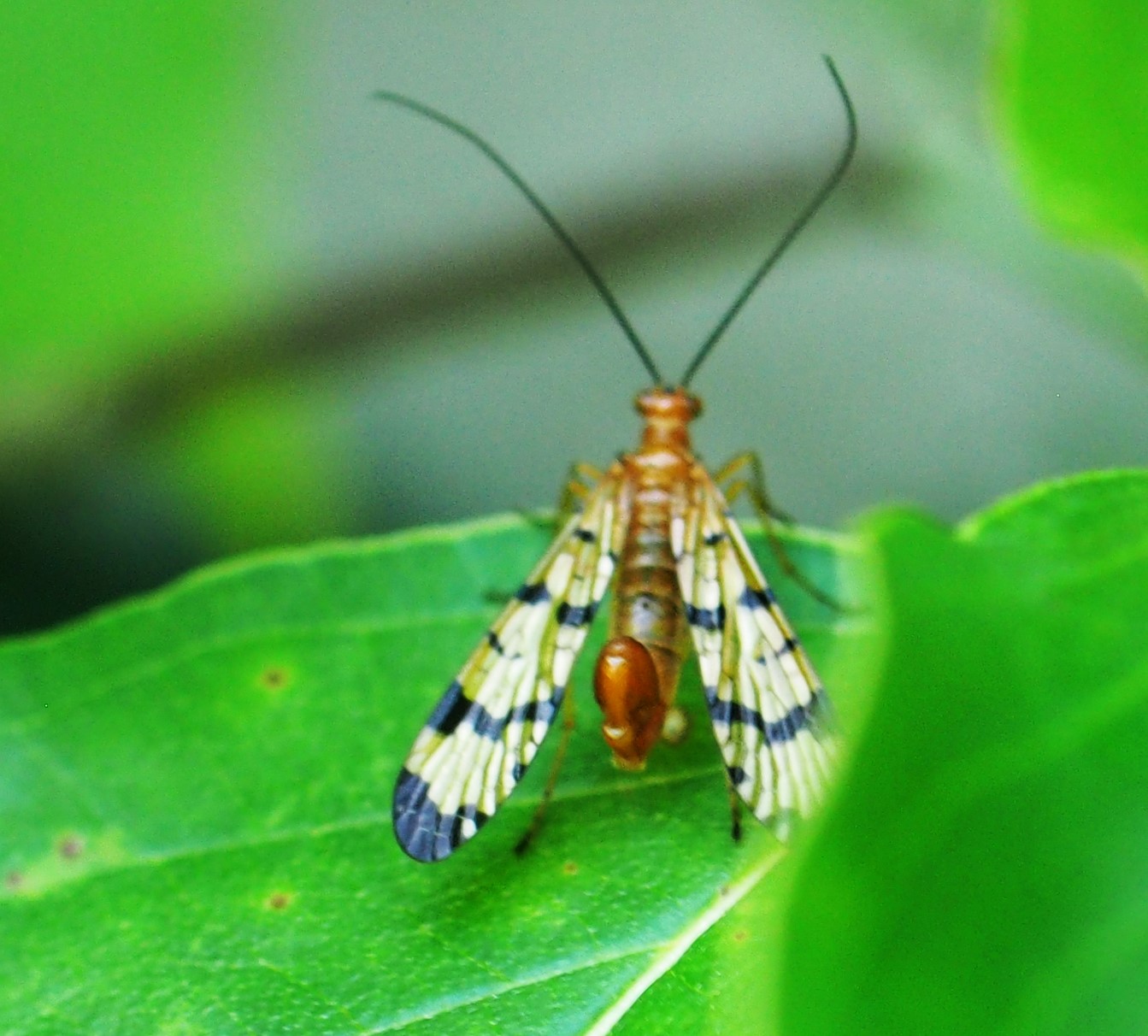

I want to end up with those gorgeous Fishes and of course the Pond with its Water Lilies.
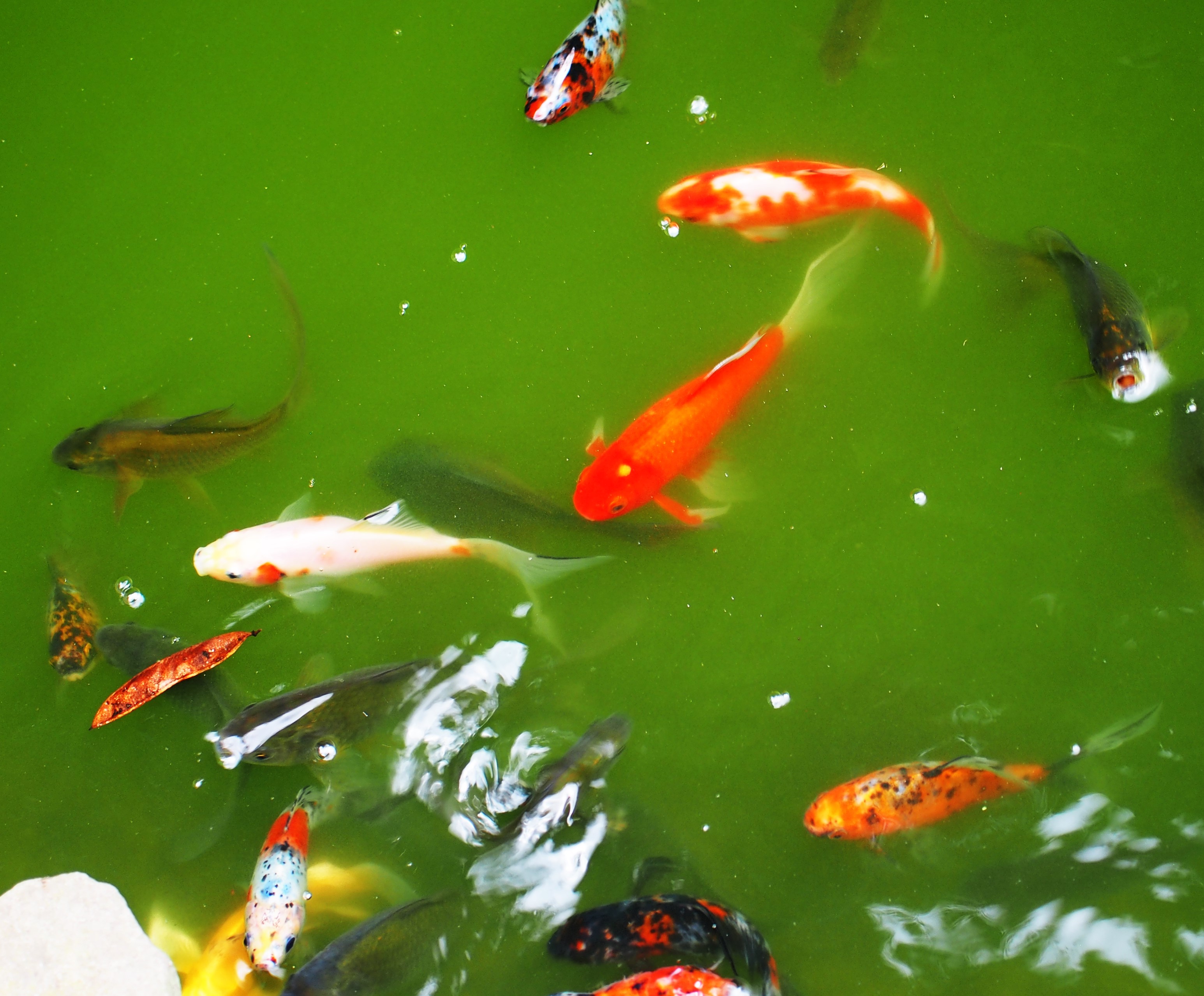

Here is the Pond in the late afternoon when the two Lily flowers are blooming fully. I don't know if you've noticed how much redder that smaller flower is than the usual ones, where it is a challenge sometimes to get the red bits to show up. I do believe that this flower is the first bloom on one of the three new Lilies I planted earlier in the Summer! The other two Lilies don't seem to be doing much. This is one of the problems with buying Lilies and getting them established. We'll see. By the way, our little Raccoon seems to be behaving somewhat better now that I have a routine that includes sprinkling Coyote urine around the pond and leaving an open can of tuna or cat food in the same place each evening.
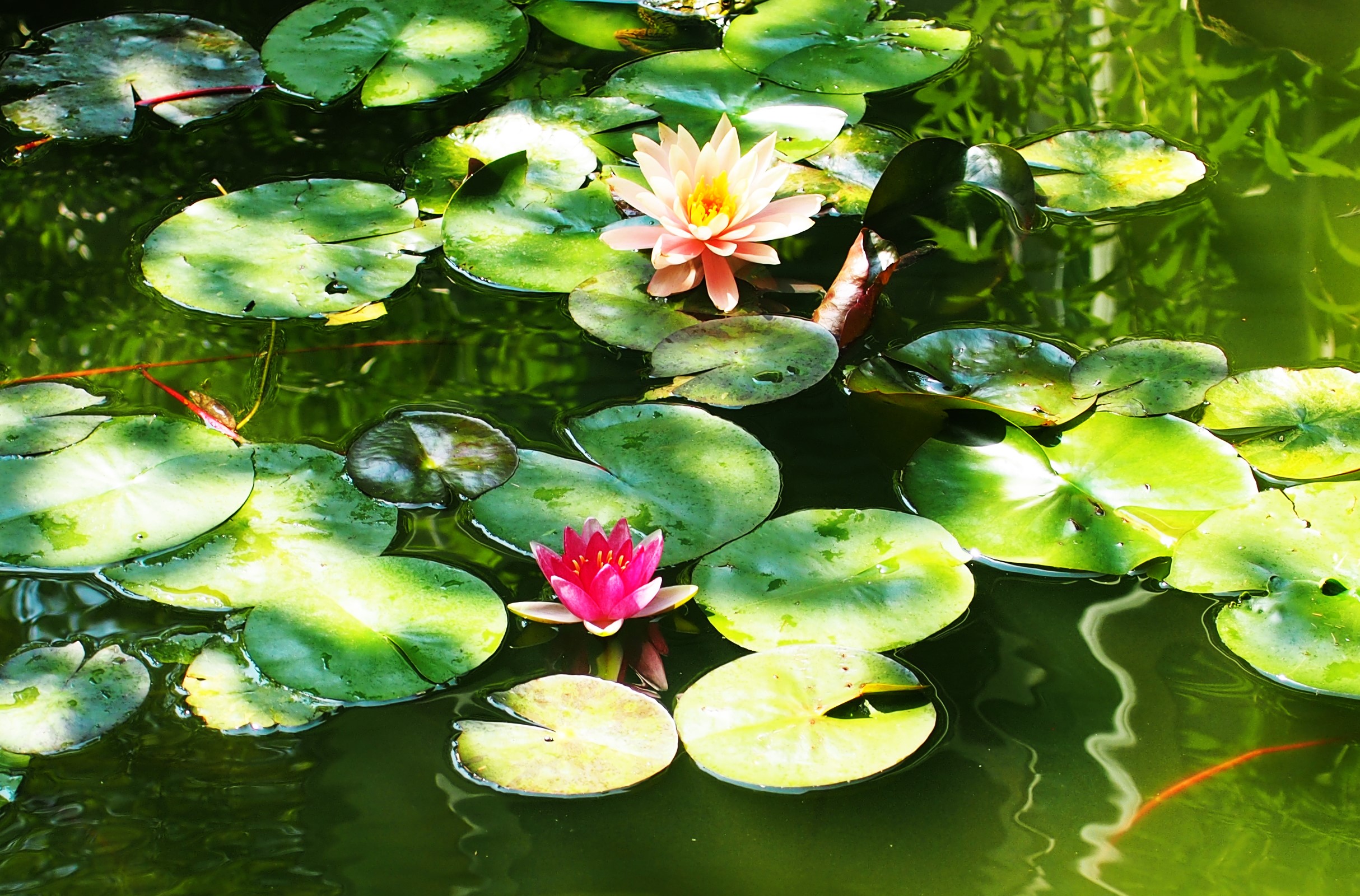
And here it is with a few Frogs posing lazily to add to the fun.
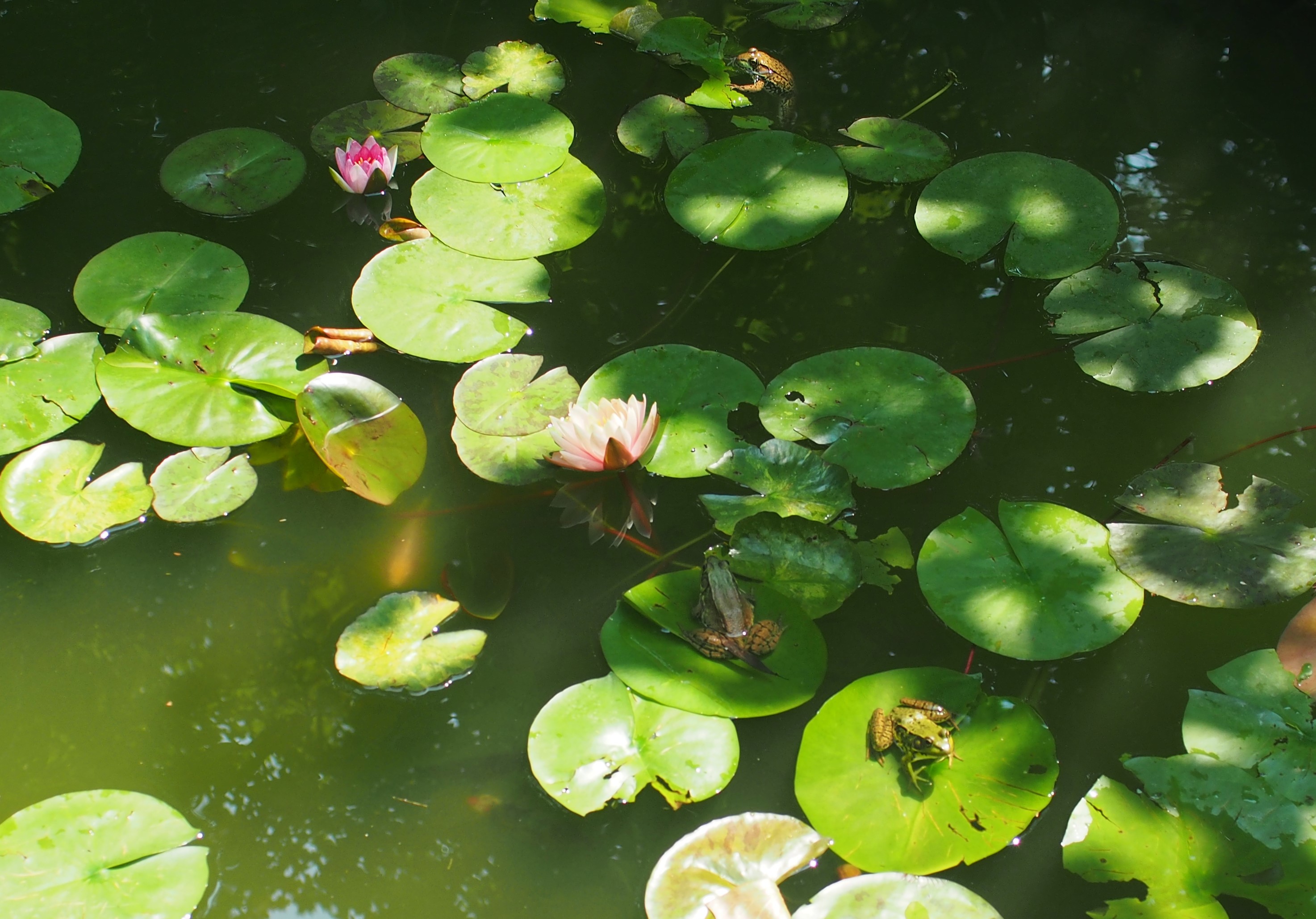
I hope you've enjoyed seeing some of the life going on in my back yard. I'm sure yours is also very full of wonderful creatures. We remind ourselves that only people can truly save our beautiful planet! Love the earth as one of your best friends. Together we can do it!
Love, Martha
Back to August 13, 2023
Forward to August 27, 2023
Back to main menu
copyright Martha O'Kennon 2023
























































































